Kelly Jensen's Blog, page 97
December 1, 2014
Mental Illness in YA As a Minefield—Explore at Will: Guest Post by Rachel M. Wilson (author of Don't Touch)
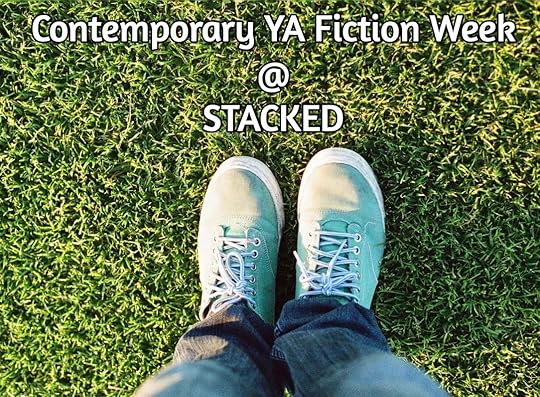
There's never going to be a time where it's not worth talking about mental illness, wellness, and health. It's important to address it head on with contemporary YA especially, and it's important to have it addressed from a variety of standpoints and perspectives. Welcome to Rachel M. Wilson, who is here to talk about the exploration of mental illness in YA and the expectations that are built around it in the books -- and in the flesh.

Rachel M. Wilson studied theater at Northwestern and received her MFA in writing for children and young adults from Vermont College of Fine Arts. Her debut novel Don't Touch came out from HarperTeen in September, followed by “The Game of Boys and Monsters,” an eerie standalone short from HarperTeen Impulse. Originally from Birmingham, Alabama,
Rachel now writes, acts, and teaches in Chicago, Illinois.
One of my favorite theater games for young people is called minefield—yes, it’s dark, all the best games are. One student’s blindfolded, and the rest of the class creates an obstacle course out of chairs, desks, textbooks, the healthy options they failed to eat at lunch … Then another student verbally guides his or her blindfolded partner through the minefield. If so much as the hem of a sleeve touches one of the obstacles—EXPLOSION. We’re all done for.
Writing about mental illness can feel a bit like that, especially when writing for young people. There are so few YAs touching on mental illness that any new addition is expected to do some heavy lifting, to fill a gap or meet the needs of a particular set of readers. Authors, gatekeepers, and readers are coming from a dozen different angles and attitudes about what mental health in YA fiction should look like.
Some of these attitudes I agree with. Others, I’m not so sure. Some represent opposite ends of a debate while others only seem to, and many are steeped in such muddy waters that I’d rather not see them presented as absolutes. In any case, here are a few of the “musts” and “shoulds” I’ve encountered:
YAs about mental illness should be medically accurate.Mental illness in YA should, like everything else in a novel, serve as a metaphor for larger themes.YAs about mental illness should include lighter scenes or humor to give readers a break.A YA about mental illness must leave the reader with a sense of hope. A mentally ill character in a YA must be shown to receive treatment and “get help.” A YA about mental illness should portray adults as potential allies. Recovery from mental illness should be portrayed as long and difficult. Recovery from mental illness should be portrayed as a positive and hopeful experience.YA that addresses the stigma surrounding mental illness risks reinforcing stigma.YA about mental illness should portray pharmaceuticals in a positive light.YA about mental illness should focus on therapy as a preferable treatment to pills. Suicide is a dark subject that alienates readers—proceed with extreme caution or avoid altogether. YAs about mental health run the risk of glamorizing mental illness (and especially suicide)—proceed with extreme caution or avoid altogether. Mental illness is an affliction, separate from a character’s true personality, to be struggled with, defeated, and recovered from.Mental illness never fully goes away, and thus should be embraced as an integral part of a character’s identity and personality.We need more books in which mental illness is the primary problem facing a character.We need more books in which mental illness is incidental and not the primary problem facing a character.YAs about mental illness are “problem novels,” and thus, about as literary as after-school specials.YAs about mental illness are “problem novels,” and thus, very important for young readers.
Phew! It’s enough to make a girl want to write fantasy, sci-fi, dystopia, ANYTHING with a filter, any genre that’s not expected to mirror the struggles of actual teens in this present-day, real-here-now world. And of course, the contradictions and conflicts in the above statements reflect contradictions and conflicts found in said real world. Woe to the author who tries to navigate this minefield with zero explosions.
Thanks to the stigma that still surrounds mental illness, our culture’s conversations about it are somewhat stunted and unsettled. People hold strong (often conflicting, sometimes uninformed) attitudes about therapy, pharmaceuticals, suicide, and even the legitimacy of psychology and psychiatry as fields of medicine.
When I enter a conversation with someone in my social circle, I can safely talk about any number of potentially touchy subjects—gay marriage, reproductive rights, the somewhat-progressive-somewhat-problematic lyrics of Meghan Trainor’s “All About That Bass”—with a fair expectation that we’re going to more or less agree. If I start a conversation about mental health, I know no such thing.
I’ve been told that psychiatric drugs are part of an oppressive conspiracy or a crutch or a placebo, heard close friends say they don’t “believe in” mental illness, heard more guys than I can count complain about their “crazy” ex-girlfriends, read one too many tweets about the “selfishness” of suicide. Thankfully, comments like this don’t derail me as they once did, but they used to set off personal explosions that might throw me off track for months. And so naturally, I avoided these conversations.
I think that’s part of why it’s still hard for YA readers to find books touching on mental illness. We’re not all comfortable with the conversation—we’re not sure how our thoughts on the subject will be received, so we keep our mouths shut.
Of course, the least common variety of mental illness—the dangerous and scary kind—is the easiest to talk about and best represented in pop culture. Mass shooters and serial killers receive tons of media attention. The one genre with no shortage of mentally ill characters—and with a relatively uncomplicated point of view on mental health—is horror. Don’t get me wrong. I’m a huge fan of horror, including horror about psychopaths, but in most of these stories, crazy=scary=bad.
Contemporary YA about mental illness has to thrive in a stigmatized climate. But it also has to navigate another kind of fear—the fear of the power of fiction. When we start talking in absolutes, fear is often at play. The “musts” and “shoulds” listed above are testaments to the power we recognize in these stories. Contemporary, realistic stories strip away the distance that’s integral to historical and speculative fiction. Because of their proximity to real life, we credit these stories with a special potential to guide or mislead teen readers … to help or cause harm.
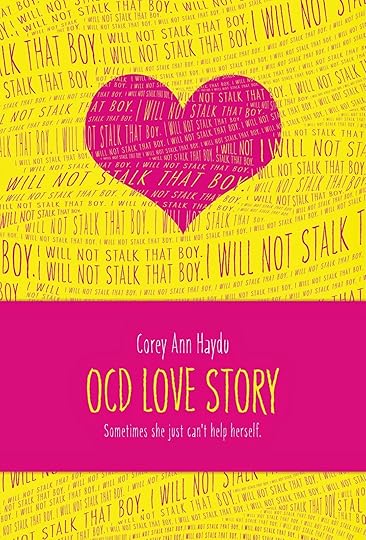 But here’s the thing. Like the explosions in a game of minefield, the scary consequences in a work of contemporary fiction are still fiction—parts of a story that reader and author co-create. The actor traversing an imagined minefield can rip off the blindfold and see only desks. The reader can slam a book shut, take a break, or stop reading altogether. A reader’s investment in a story gives it power, and this investment remains in the reader’s control. Fiction that questions or explodes some of the above absolutes can offer a safe way for readers to explore their own conflicts and concerns around mental health. The least comfortable part of the story might be the part that rings most true.
But here’s the thing. Like the explosions in a game of minefield, the scary consequences in a work of contemporary fiction are still fiction—parts of a story that reader and author co-create. The actor traversing an imagined minefield can rip off the blindfold and see only desks. The reader can slam a book shut, take a break, or stop reading altogether. A reader’s investment in a story gives it power, and this investment remains in the reader’s control. Fiction that questions or explodes some of the above absolutes can offer a safe way for readers to explore their own conflicts and concerns around mental health. The least comfortable part of the story might be the part that rings most true.
I love that Meg in Nina LaCour’s The Disenchantments feels ambivalent about taking the medicine that prevents her panic attacks. I love that Lisha in Corey Ann Haydu’s OCD Love Story gets fed up with Bea’s symptoms and isn’t always an empathetic friend.
Readers who’ve written to me about seeing themselves in Don’t Touch tend to mention some of Caddie’s less comfortable traits—like her reluctance to be open about her problems. One reader told me about the guilt she still feels about having kept so many secrets from her friends. Another mentioned this line: “… right then I want to tell him everything and see how he reacts, see if anyone can understand and not think I’m crazy like I know I am” (147).
She wrote, “Thank you for writing that. Thank you for making that an OK thought to have.”
That’s a line that I might have cut if I’d let fears about reinforcing stigma or using the word “crazy” in a negative way take precedence over Caddie’s voice. It’s hard to predict what bits and pieces of story will mean the most to a reader.
No book can satisfy every “must” and “should” listed above. One that tries will likely come out feeling sanitized and dishonest. Explosions can be messy, but they can also clear a path. So let me present an absolute I can get behind:
YA that includes mental illness should seek to honestly represent a unique character’s experience of a particular illness in a particular place and time and all the messiness and conflict that goes along with that.
As with other categories of diversity, it’s important to allow for diversity and difference within narratives about mental illness—to embrace books that start conversations, that address stigma and conflict, that deal in messiness. Writing, recommending, and reading fiction about mental illness can feel fraught with peril, but it’s still important to step onto the field.
It’s been great to see books about mental illness included in the #WeNeedDiverseBooks campaign, and I was excited to see a panel of authors who self-identify as “basket cases” talking about their experiences with anxiety, depression, & ADHD at YALL Fest. These conversations aren’t always comfortable, but silence and stigma are bestie-best friends, so let’s keep the conversation flowing.
As for recommendations:
Stacked has a great list from last November of recent contemporary YA featuring mental illness.
Here's a list of lists about teens and mental health resources from Teen Librarian Toolbox.
I was also really pleased to find Don’t Touch on YA Highway's Reading List of Mental Health in YA and in Erin E. Moulton’s recent piece for School Library Journal on Bibliotherapy for Teens: Helpful Tips and Recommended Fiction.
For those who are interested, I talked more about the balance between taking care when writing about mental illness and being overly fearful of getting things wrong in an interview with Kody Keplinger for Diversity in Kidlit.







 Related StoriesAdrenaline-fueled, Male-Centered Contemporary YA FictionThe Necessity of Violence: Guest Post from Eric Devine (Author of Press Play, Dare Me, and Tap Out)Contemporary Realistic YA Week @ STACKED
Related StoriesAdrenaline-fueled, Male-Centered Contemporary YA FictionThe Necessity of Violence: Guest Post from Eric Devine (Author of Press Play, Dare Me, and Tap Out)Contemporary Realistic YA Week @ STACKED
Published on December 01, 2014 22:00
Adrenaline-fueled, Male-Centered Contemporary YA Fiction
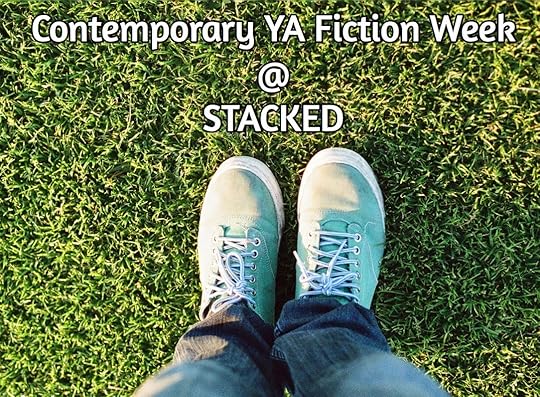
With Eric Devine's post on male violence and aggression, I could think of no better sort of list to write than one featuring contemporary realistic YA books that are male-centered and feature high adrenaline and, in most cases, violence of some kind. These books are gritty and intense.
All descriptions come from WorldCat, and most of these titles were published in the last 5-7 years. I'd love to have more titles to add to this list, so if you can think of any, feel free to offer them in the comments.
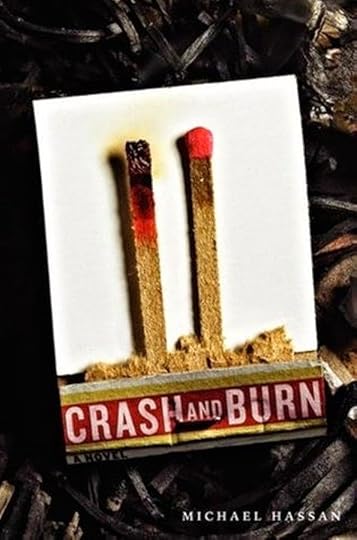
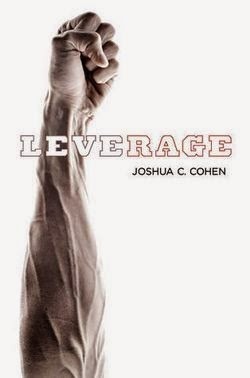
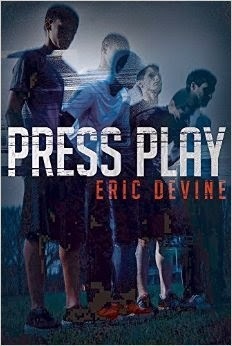
Crash and Burn by Michael Hassan: Steven "Crash" Crashinsky relates his sordid ten-year relationship with David "Burn" Burnett, the boy he stopped from taking their high school hostage at gunpoint.
Leverage by Joshua C. Cohen: High school sophomore Danny excels at gymnastics but is bullied, like the rest of the gymnasts, by members of the football team, until an emotionally and physically scarred new student joins the football team and forms an unlikely friendship with Danny.
Press Play by Eric Devine: While making a documentary to get himself into film school, Greg accidentally captures footage of brutal and bloody hazing by the lacrosse team, and he must decide whether to release the film or keep the secret.
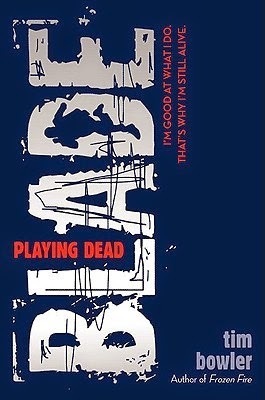
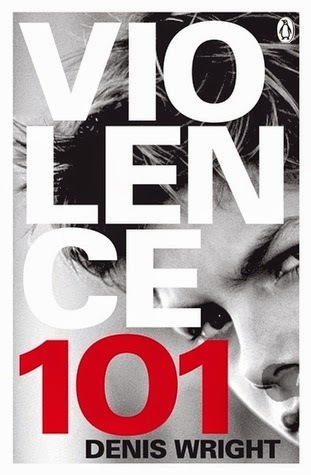
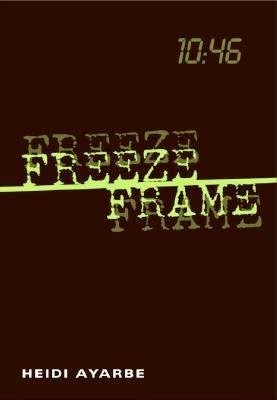
Blade: Playing Dead by Tim Bowler: A fourteen-year-old British street person with extraordinary powers of observation and self-control must face murderous thugs connected with a past he has tried to forget, when his skills with a knife earned him the nickname, Blade.
Violence 101 by Denis Wright: In a New Zealand reformatory, Hamish Graham, an extremely intelligent fourteen-year-old who believes in the compulsory study of violence, learns that it is not always the answer.
Freeze Frame by Heidi Ayarbe: Fifteen-year-old Kyle believes he does not deserve to live after accidentally shooting and killing his best friend.
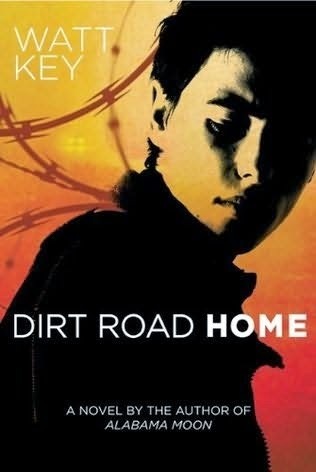
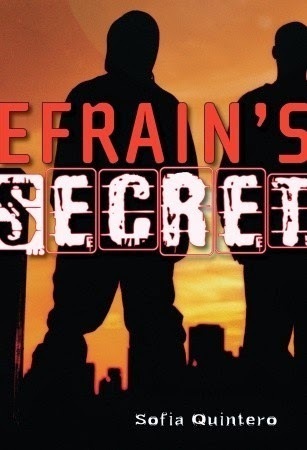
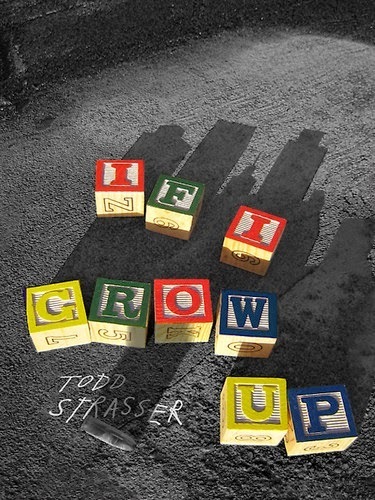
Dirt Road Home by Watt Key: At Hellenweiler, a reformatory for second-offenders, fourteen-year-old Hal Mitchell will soon be free if he can avoid the gang violence of his fellow inmates, but the real enemy may lie elsewhere.
Efrain's Secret by Sofia Quintero: Ambitious high school senior and honor student Efrain Rodriguez makes some questionable choices in pursuit of his dream to escape the South Bronx and attend an Ivy League college.
If I Grow Up by Todd Strasser: Growing up in the inner-city projects, DeShawn is reluctantly forced into the gang world by circumstances beyond his control.
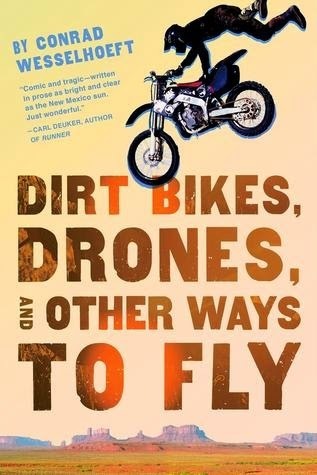
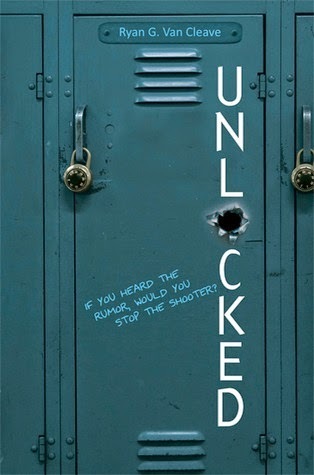
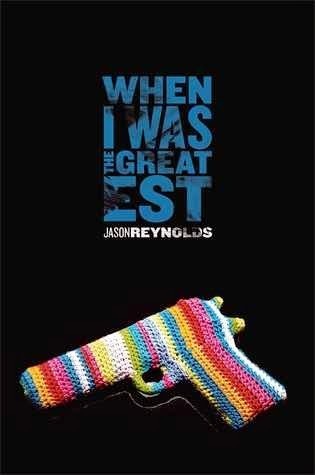
Dirt Bikes, Drones, and Other Ways to Fly by Conrad Wesselhoeft: Seventeen year-old dirt-bike-riding daredevil Arlo Santiago catches the eye of the U.S. military with his first-place ranking on a video game featuring drone warfare, and must reconcile the work they want him to do with the emotional scars he has suffered following a violent death in his family.
Unlocked by Ryan G. Van Cleave: While trying to impress a beautiful, unattainable classmate, fourteen-year-old Andy discovers that a fellow social outcast may be planning an act of school violence.
When I Was The Greatest by Jason Reynolds: Ali lives in Bed-Stuy, a Brooklyn neighborhood known for guns and drugs, but he and his sister, Jazz, and their neighbors, Needles and Noodles, stay out of trouble until they go to the wrong party, where one gets badly hurt and another leaves with a target on his back.
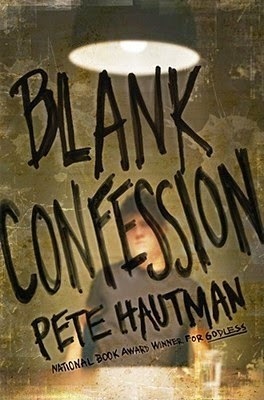
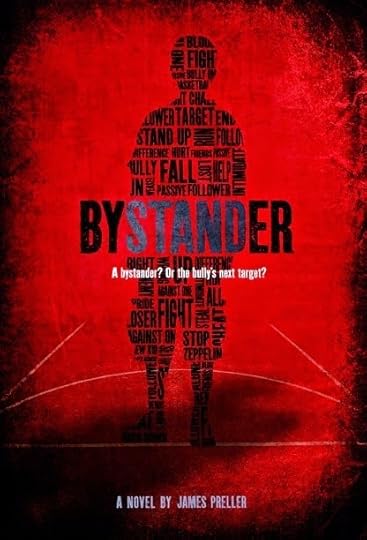
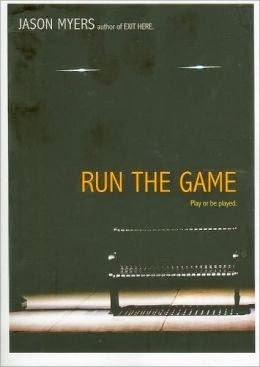
Blank Confession by Pete Hautman: A new and enigmatic student named Shayne appears at high school one day, befriends the smallest boy in the school, and takes on a notorious drug dealer before turning himself in to the police for killing someone.
Bystander by James Preller: Thirteen-year-old Eric discovers there are consequences to not standing by and watching as the bully at his new school hurts people, but although school officials are aware of the problem, Eric may be the one with a solution.
Run The Game by Jason Myers: A cocaine-addicted teenaged guitarist in a rock band falls dangerously in love with a fourteen-year-old prostitute.
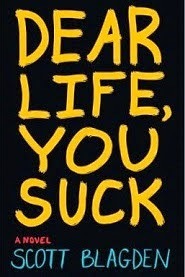
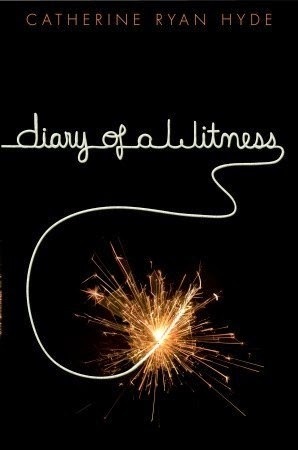
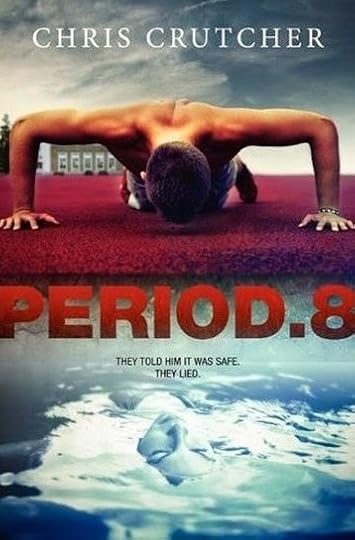
Dear Life, You Suck by Scott Blagden: Irreverent, foul-mouthed, seventeen-year-old Cricket Cherpin, living under the watchful eye of Mother Mary at a Catholic boys' home in Maine, has such bleak prospects he is considering suicide when Wynona Bidaban steps into his world.
Diary of a Witness by Catherine Ryan Hyde: Ernie, an overweight high school student and long-time target of bullies, relies on his best friend Will to watch his back until Will, overwhelmed by problems at home and guilt over his brother's death, seeks a final solution.
Period 8 by Chris Crutcher: Paul "the Bomb" Baum tells the truth. No matter what. It was something he learned at Sunday School. But telling the truth can cause problems, and not minor ones. And as Paulie discovers, finding the truth can be even more problematic. Period 8 is supposed to be that one period in high school where the truth can shine, a safe haven. Only what Paulie and Hannah (his ex-girlfriend, unfortunately) and his otherclassmates don't know is that the ultimate bully, the ultimate liar, is in their midst. Just about everyone else who stops by the safe haven of the P-8 room daily are deceived. And when a classmate goes missing, all hell breaks loose.
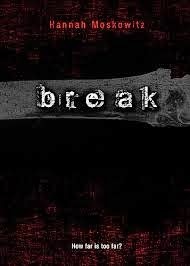
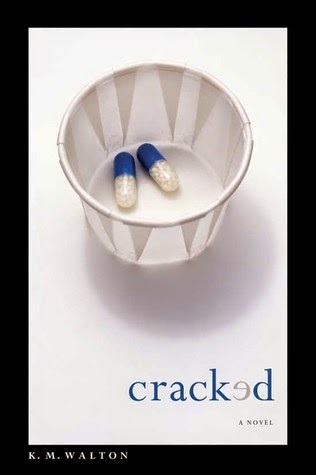
Break by Hannah Moskowitz: To relieve the pressures of caring for a brother with life-threatening food allergies, another who is a fussy baby, and parents who are at odds with one other, seventeen-year-old Jonah sets out to break every bone in his body in hopes of becoming stronger.
Cracked by K. M. Walton: When Bull Mastrick and Victor Konig wind up in the same psychiatric ward at age sixteen, each recalls and relates in group therapy the bullying relationship they have had since kindergarten, but also facts about themselves and their families that reveal they have much in common.







 Related StoriesThe Necessity of Violence: Guest Post from Eric Devine (Author of Press Play, Dare Me, and Tap Out)The Big Male YA Narrator Round-upContemporary Realistic YA Week @ STACKED
Related StoriesThe Necessity of Violence: Guest Post from Eric Devine (Author of Press Play, Dare Me, and Tap Out)The Big Male YA Narrator Round-upContemporary Realistic YA Week @ STACKED
Published on December 01, 2014 10:00
November 30, 2014
The Necessity of Violence: Guest Post from Eric Devine (Author of Press Play, Dare Me, and Tap Out)

To kick off Contemporary YA week here at Stacked, let's hear about violence -- male-led violence more specifically -- from author Eric Devine.
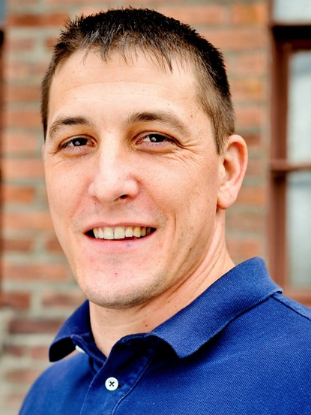
Eric Devine is the author of multiple works of Young Adult fiction, most recently, Press Play, which was published in October. He is also a veteran high school English teacher who spends as much time teaching as he does completing field research for his novels. His work has been listed by YALSA and Booklist for reluctant readers and for Best in Sports. He is married to his high school sweetheart, and his wife and he have two wonderful daughters and two not-so-wonderful Labradors. Find out more at ericdevine.org, facebook.com/ericdevineauthor, or Twitter: @eric_devine
***
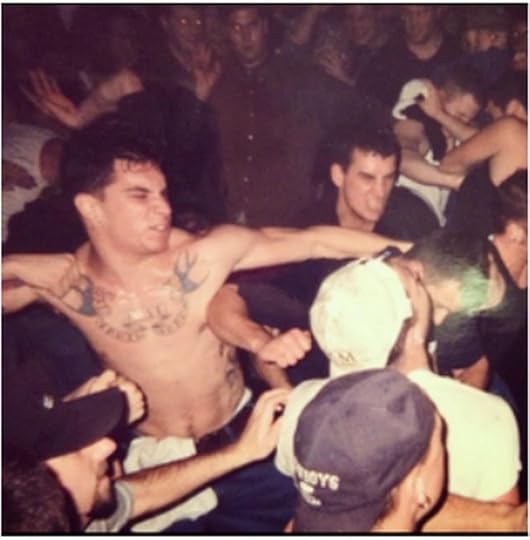
The punch being thrown in the image above is one of the most positive outlets for the young man pictured. He is Michael, and his violence was one of the best things I could have experienced.
I am sure many will look at this picture and see nothing but aggression, nothing but anger. That is true. But there is also the release of tension, a catharsis. Michael was abused and he grew up violent. Without this mosh pit and his ability to hit people in a constructive way, he would have killed someone. However, I did not grow up abused and in a violent household, so why was being around him such a positive development for me?
For many adolescents there is a very real desire to take shit out on things and people. I needed someone to tell me this was okay and not to hate myself for feeling such. I wasn’t alone. I had a friend who fought not only people, but telephone poles and trees. I’ve known others who have abused animals and themselves. If I were a psychologist, I might have the answer about why this occurs, but I’m not and so I don’t. What I can tell you is that the desire is real and is not something that ended with my grunge-era generation. As an educator, I see boys hitting each other all the time, slamming each other into lockers, and sometimes breaking out in real fights. And, to a degree, this is perfectly fine.
Constructive versus Destructive
There was a tradition, a kind of game among my friends, which we would play in a basement. Typically, we were emboldened by illicit substances, and at some point the fight would be suggested. Then the music was cranked, and weapons were grabbed. Someone would yell, “Doorknob,” and the game was on. The goal: get to the doorknob at the top of the stairs. But to succeed, you had to cross a battlefield, where it was every man for himself.
Bottles were smashed into faces, golf clubs swung into legs, and a thousand punches were thrown. And, yet, we all liked each other. We fought like this, game after game, until everyone was too exhausted to continue. This was before the publication of Fight Club, and as crazy as it sounds, our fights focused on the exact desires explored within the novel. This was a safe way for us to test our mettle. We could beat on one another and come to know just how much we could take, which would be important if it were ever someone else doing the beating. And we learned how to fight back, a skill I still see as valuable.
The last time we played this game is the first time I got knocked out. One of my friends punched me so hard in the back of the head that I fell to the floor and stayed there for a few minutes, out cold. I saw this man just the other day and congratulated him on his second child. There’s no ill will. He taught me a powerful rule in fighting: never let anyone get at your back. My father couldn’t teach me this; he didn’t know. But my friends could, and those beat downs served me well in college and beyond.
This is all to say that violence can be and is constructive. Mike moshed and fought with us and released all his rage so that he didn’t hurt anyone more than was acceptable. He knew enough about himself to seek this. I will never stand in judgment of someone who knows his needs and finds a constructive way to fulfill them. Mike may have “To Thine Ownself Be True” tattooed on his body now, but he was living the adage, then, and in turn, teaching us a powerful lesson.
Destructive
The conversation about teen violence should always focus on the destructive end, the place where males, particularly, do not have the outlets they need to channel this energy, and therefore, do so in grossly inappropriate ways.
Fighting is not the problem. The display of power is. My friends and I fought each other, but we never tried to dominate, we sought to learn. When boys fight for revenge, bring weapons into school, assault and rape their girlfriends or boyfriends, we should all be alarmed. This is unacceptable. This should be addressed. And beyond the obvious education necessary, one way would be to provide a safe environment for boys to work out their aggression.
Boxing gyms used to be as popular as MMA gyms are today. They served an outlet, often after school, and often free to troubled youth. Every person I know who participates in some violent discipline, like martial arts or boxing, talks about the respect of it, the way they know they don’t have to fight, but can if need be. My friends taught me the same. And post-basement brawls, we were the least aggressive males on the planet. Fighting was out of our system, and it felt good to have it gone. It didn’t make us want more.
Yet, unfortunately, we also played football together. This may seem contradictory, because aren’t sports a perfect venue to channel this negative energy?
As violent sports go, football does not teach you discipline. In fact, it just became another place for us to release our pent up violence, and we were often rewarded for our ability to hurt people. It doesn’t need to be this way, but often sports like football and lacrosse and hockey offer very little beyond the inducement to be violent. Because aggression and a violent propensity can make you an all-star. And we live in a society that rewards such, on and off the field.
Therefore, something that allows teen males to “blow off steam” in a safe way, without reward for being nasty, with only a goal of being constructive with anger, is a potential solution. There is no one-size-fits-all answer for what that looks like, and that’s okay. Just ask the teens what they want; they’ll let you know.
Fact versus fiction
In all of my novels there is at least one fight scene. Often there are more. Some might dismiss the authenticity of my stories, feeling that I have a limited perspective because of my upbringing, and not a true reflection on American culture. That notion is wrong.
I write what I see and hear, predominately from my students. I even had them respond to a journal prompt so I could better inform myself for this article. The “boys will be boys” adage came up time and again. And as frustrating as that was to see––because as an adult male, I loathe that easy excuse––it also makes sense. Every one of my forty-eight students polled had something to say about violence. Had I asked them to write about love, the connections might not have been so handy.
We live in a violent world. My students see this and know that “boys throw punches, and girls talk shit behind your back.” Yes, this is a very stratified notion of gender behavior, but it is still illuminative. This is what teens see. Boys who need to express their anger and frustration, punch. Girls who need to, use manipulation more than overt violence. They are all being socialized into roles with violent implications, and there is a social desire for them to uphold the framework.
So let them blow it up. Literally. Give teens more outlets, physically and emotionally. Let them climb into a ring with gloves and head gear. Let them work it out. Then guide them toward books that speak about violence and let them talk about how they resonate. Give teens a safe context in which to explore and you will see less violence, not more.
I know that may seem like a lofty conclusion, but based on my experience, and from what I see every day, there’s little harm in trying to see if I’m right. As a species, we are a violent animal. Simply because we can communicate better doesn’t mean we are always going to. However, it should be the goal. Yet, to reach it, we might need to reframe how we look at violence. Much like with the picture above. Possibly what we see is not a roadblock, but rather, an appropriate step toward a better path.







 Related StoriesContemporary Realistic YA Week @ STACKEDThe Big Male YA Narrator Round-upContemporary YA Week Wrap Up -- And A Bit About Kelly's Book
Related StoriesContemporary Realistic YA Week @ STACKEDThe Big Male YA Narrator Round-upContemporary YA Week Wrap Up -- And A Bit About Kelly's Book
Published on November 30, 2014 22:00
November 29, 2014
Contemporary Realistic YA Week @ STACKED
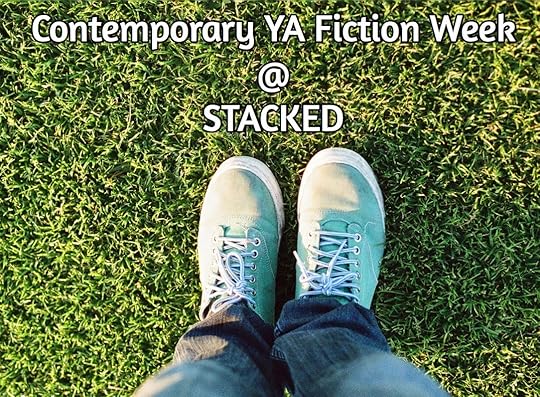
It's hard for me to believe, but this is the fourth contemporary YA week here at STACKED. What began in 2011 as a way to explore a genre within YA has grown into a series that, while a lot of work, is so rewarding to put together each year. You can catch up with the posts from previous years through the contemporary week tag.
This year, we have 5 brand new voices weighing in on topics ranging from mental health to social class to "dude culture" as it appears in contemporary realistic YA fiction. In addition to those thought-provoking posts, I'm writing accompanying, related book lists featuring realistic YA three days, as well. The week will wrap up with a giant post of 2015 contemporary YA books.
To celebrate the event, we're also offering up a giveaway of a book by each of the contributors. This contest is open to US and Canadian residents only and includes the following books by the (not surprise anymore!) guest authors:
Fake ID by Lamar Giles and a pre-order of Endangered , out in April (the topic of his post)Don't Touch by Rachel M. WilsonPress Play by Eric DevineNone of the Above by I. W. Gregorio, a pre-order, out in April
I'll also be offering up a copy of my book, It Happens , which should give the winner an even larger selection of book lists and discussion fodder relating to contemporary YA fiction. To enter, fill out the form here, and I'll pull a winner at the end of next week so books can be on their way before the holidays. The winner will walk away with a total of 6 books.
As always, I hope this is an interesting, engaging, and exciting series for readers, as much as it is for me to put together and think about.
Loading...







 Related StoriesSuicide and Depression in YA: A Discussion and Book ListLife By Committee by Corey Ann HayduReader's Advisory and Contemporary YA Fiction from the CLA Conference
Related StoriesSuicide and Depression in YA: A Discussion and Book ListLife By Committee by Corey Ann HayduReader's Advisory and Contemporary YA Fiction from the CLA Conference
Published on November 29, 2014 22:00
November 27, 2014
This Week at Book Riot
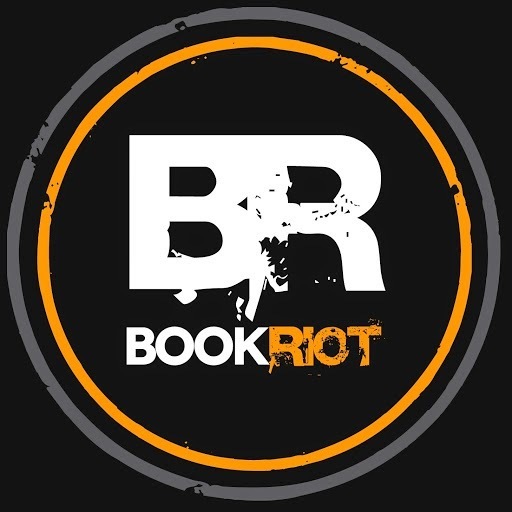
Over at Book Riot this week . . .
A literary tour through the streets of Toronto! I'm talking about some of the great bookstores, bookish landmarks, and book festivals to check out. 3 On A YA Theme is all about books that feature or pay homage to Louisa May Alcott's Little Women (which are surprisingly rare).







 Related StoriesThis Week at Book Riot
Related StoriesThis Week at Book Riot
Published on November 27, 2014 22:00
November 25, 2014
INSPIRE: Toronto International Book Festival, Part 3 - The Sites, The Sounds, & The Wrap-Up
This weekend over at Book Riot, I put together a post on the literary tourism that could be done throughout the city of Toronto, including some of the best bookstores, libraries, festivals, and more. Part of the post I was able to put together because of the bookstore tour I took part of while at the INSPIRE: Toronto International Book Festival.
Since I couldn't put all of the bookstores into that post, I thought I'd share them over here, along with some of the photos and highlights of each shop.
Before we headed out for the tour on a private bus (which was awesome), the bloggers met with Vanessa and Zena from Tourism Toronto, as well as Dominique, who was one of the Renaissance Hotel representatives and picked out a delicious breakfast selection for us. I'm a sucker for breakfast, so having it family style was even more enjoyable, since it meant sampling everything. The best thing, though, was what I ended up going back for on my last day in Toronto: banana bread french toast.
All of us international bloggers took a photo together before hopping onto the bus:
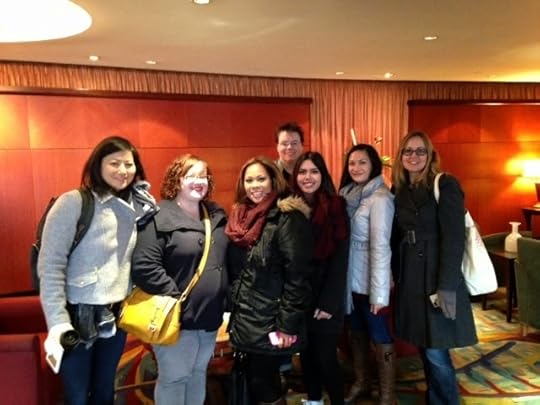 Left-to-right: Jane, me, MaryAnn, Gabi, Thea, Ana, and Liz in the back.
Left-to-right: Jane, me, MaryAnn, Gabi, Thea, Ana, and Liz in the back.
When we got to our first stop, Book City, we met with Michael Kaminer, who was our tour guide, and we also met up with a number of local Toronto book bloggers who joined us on the tour. Michael wrote about how Toronto is a great city for bookstores in the Washington Post last year, and he took us through several of the stops he made and which he wrote about in his piece here.
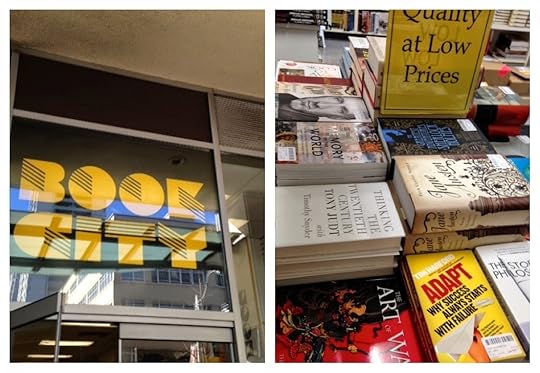 Book City reminded me a lot of the old Crown Books we used to have in the states. The set up and the way books were shelved felt like a used book store, but it isn't -- this is a new book store, though remaindered titles are left to sell through, rather than shipped back, so there is almost a wider selection of titles than many new bookstores have.
Book City reminded me a lot of the old Crown Books we used to have in the states. The set up and the way books were shelved felt like a used book store, but it isn't -- this is a new book store, though remaindered titles are left to sell through, rather than shipped back, so there is almost a wider selection of titles than many new bookstores have.
We got to meet with the manager here, who told us much of their customer base is older, and that they strive to provide really good service, meaning that if someone calls from around town, it's not past them to sometimes deliver the book that the customer wants. I found their children's and YA section to be fairly underwhelming, which made sense because of who their customer base was and what it was they happened to be looking for.
The second stop on our tour was to BMV Books, which is a used bookstore. They aren't the kind of used store that takes anything, though. They, too, cater to their customers and in particular, they look for books that are harder to find and, in some cases, which are more collectible items.

This was one of my favorite stops on the trip, as it had a huge selection of titles. There were four floors to explore, including an entire floor dedicated to children's and YA lit (where I saw a great variety of titles) and an entire floor dedicated to comics. I ended up buying a graphic novel here when we had time to wander around, and I spent some time enjoying the shelves on the first floor that were marked as "old novels."
The next stop was one that Michael called one of his favorites: Ten Editions Books. When you think of used book stores, this is the kind of place you think about. It was packed from floor to ceiling with books. Then, the back of the store featured additional piles and boxes of books.
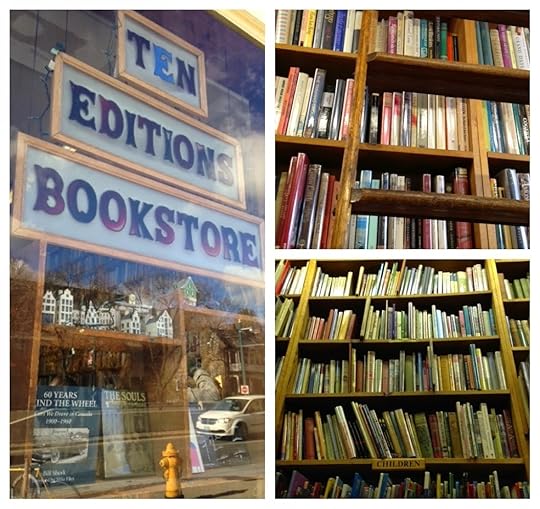
There were indeed ladders attached to the shelves, so you could climb up and pick through books. For some perspective on how tall the shelves were, the bottom right photo there is taken from above my head -- I couldn't reach the shelf below the one labeled "children's," and I'm about five foot two. This was a neat place, though not my favorite because I don't find the smell of old books romantic or sensual at all. For those who do love it, though, this would be a paradise.
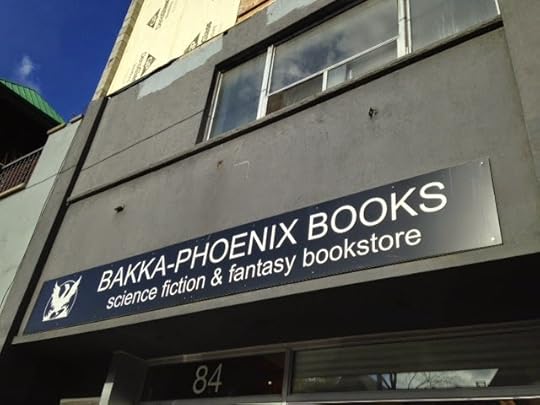 We walked to the next store, Bakka-Phoenix, since it was just around the corner. This was, hands down, my favorite store. The entire shop is dedicated to science fiction, fantasy, and speculative fiction. The upstairs portion was new books, and the downstairs featured Star Wars/Star Trek titles. Bakka-Phoenix is where a number of well-known speculative fiction authors got their start as book sellers, including Cory Doctorow and Robert J. Sawyer, and Leah Bobet is currently one of their staffers. The seller who was there when we went was super nice, and she was so eager to talk about books and the tricky business of recommending books and getting to know your customers and what it is they may or may not like. We got to talk about book covers and how sometimes, the ugliest book cover can have the best story beneath it, and sometimes, selling the book with the ugly cover is a game of trust between seller and customer.
We walked to the next store, Bakka-Phoenix, since it was just around the corner. This was, hands down, my favorite store. The entire shop is dedicated to science fiction, fantasy, and speculative fiction. The upstairs portion was new books, and the downstairs featured Star Wars/Star Trek titles. Bakka-Phoenix is where a number of well-known speculative fiction authors got their start as book sellers, including Cory Doctorow and Robert J. Sawyer, and Leah Bobet is currently one of their staffers. The seller who was there when we went was super nice, and she was so eager to talk about books and the tricky business of recommending books and getting to know your customers and what it is they may or may not like. We got to talk about book covers and how sometimes, the ugliest book cover can have the best story beneath it, and sometimes, selling the book with the ugly cover is a game of trust between seller and customer.
When we were leaving the store, a customer was walking in and saw the crowd as we were heading out. The seller mentioned it had been a bunch of bloggers, and the customer mentioned how much he loved The Book Smugglers -- and he got to meet them. Then he mentioned how he loved Liz B's writing, and he got to meet her, too. It was a neat moment for a blog reader to connect with the bloggers he reads.
The next stop on our tour was right next door, Caversham Booksellers. This is a specialty shop focused on mental health books -- if there were a guide or a book you needed about mental health, this is North America's largest store focused on it. They're especially focused on Freudian/psychoanalysis. It was neat to see the inside of a very focused store like this, and when we were there in the middle of the morning on a Friday, it was quite busy.
Following Caversham, we hopped back onto our bus and got to see another traditional used book store, Willow Books. Unlike Ten Editions, this store was more spread out, and while it, too, featured some great piles and boxes as display spaces, there was more room to breathe. The tour guide suggests this is like a messier version of The Strand or Powell's books, which might be a little bit of a stretch in terms of size and selection, but in terms of how it was set up and unassuming, that's a pretty fair assessment.
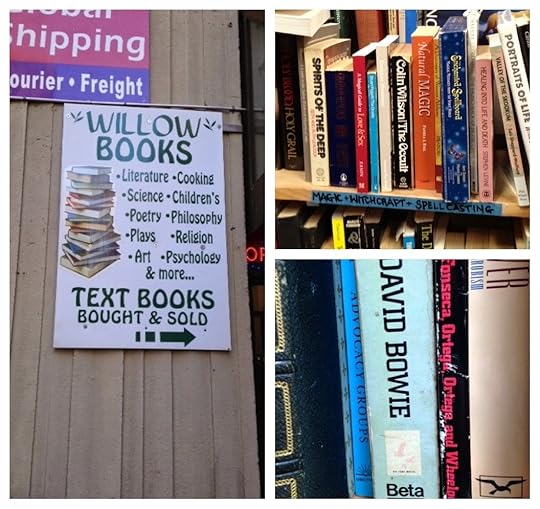
The best find at Willow Books for me was the glorious David Bowie Beta tape I found in one of the rows of books. I mean, I guess if you have a spare Beta player around, that might be something you'd need. And something maybe you'd be looking for in a store like this.
Our final stop on the book store tour was to Seekers Books. The store owner told us a little bit about the background of the store, which is located down a flight of stairs, below the main street, and focuses on esoteric, philosophical, occult, and spirituality titles. It's a used shop, but it also has new books in it, too. The owner got inspired after majoring in psychology in college and meeting a professor who talked about spirituality and other topics that aren't traditionally part of a major in psychology. From there, he decided a book store dedicated to these ideas was what he wanted to do.
More interesting than that, though, was his philosophy that people will find the right book for them. He often has people who come in and don't know what they're looking for, but because this shop offers such a unique mix of titles, they often walk away finding exactly what it is they didn't know they were looking for. Seekers has a nice vibe to it, and the way its set up lent itself to browsing and perusing.
One of the most interesting parts of Seekers for me was the huge selection of middle grade and YA novels in the back room. This was something I hadn't seen at many of the other stores, and it felt like an interesting selection to have in a store like this.
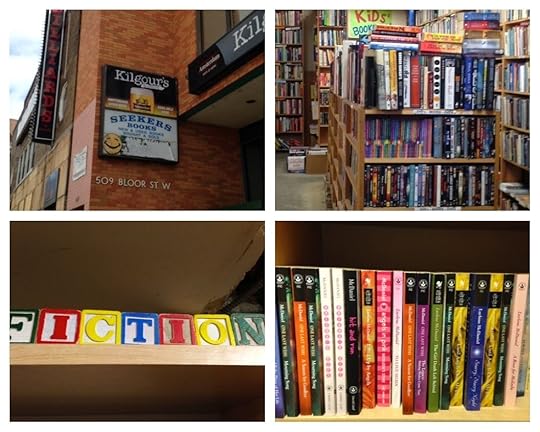
While the book store tour was such a neat experience, it was certainly colored by Kaminer's perspective that indie book stores were the best places. It's not a bad assertion, nor were any of his tour stops poor choices. Many of them weren't necessarily of interest to those of us on the tour though, meaning that during browsing time, some of us were done pretty quickly and ready to move on to the next place. I wish we'd seen a wider variety of stores, and this was something that was asked on the tour, but wasn't particularly well addressed.
One of the most interesting things said on the tour, though, was from Jane, who pointed out that nearly every book store we went to had titles that featured male fantasy books (think pulpy, guy hero saves a vulnerable and attractive female stories) and none of them had a romance section. What did that say about the tour we went on? What did it say about the types of readerships these books have? There's a lot of food for thought in that comment and I'm not sure how to unpack it.
***
I've talked at length about the highlights of the trip, the highlights of the INSPIRE: Toronto International Book Fest (TIBF), and the bookstore tour through the central part of the city. To wrap up this short series, I thought it would be worth talking about what worked for the event and what could be improved for the future.
TIBF Highlights
I think this was covered pretty well in my first two posts here and here. I think TIBF achieved what it set out to do, and I look forward to seeing what they have on tap for the future in terms of programming and panels.
What Could Be Improved
For the first year, there was a lot that seemed like it worked pretty well. That said, there were a number of things that definitely fell between the cracks.
The convention center had no wireless internet. They did not even have an option to pay for a day of service. There was spotty public wifi located downstairs in the convention center, if you found the right corner, which made it impossible to live tweet or blog about any of the events. The green room, which was open to media, didn't have wireless, either. If the goal of bringing in bloggers was for media coverage and if the goal of bringing international bloggers was to do that, this was a big failure. I didn't turn on my data, and I didn't have an option for wireless in the building, so I felt no reason to do any writing at all until after the event. More YA panels. There was very little YA presence at TIBF, and the names they had were fairly well-known. I would have loved to see more local authors and more local YA authors. Toronto and the GTA, as well as Ontario more broadly, have a ton of YA presence, so tapping that would have been great. One of the things that Ardo mentioned in her own write up on TIBF was that there was almost no outreach to local bloggers. That...seems like a pretty big missed opportunity. How great would a local advisory committee have been? I know I would have loved to get to know the local bloggers better, as what conversation we did have was on the tour bus between book stores. It seems like they have a great community, and I wanted to hear more about it. It was impressed upon us that part of why they wanted to bring in international bloggers was to not just cover TIBF, but to also talk about the city itself. That's why we got passes to check out some of the attraction for free, as well as why we got to do this book store tour. However, no time existed to do this. I took an extra two days for myself on this trip, but because of the flight change, I didn't get time to explore Toronto, either. If we were to visit any of these places or to talk about the city, we should have been given more time to do so. This isn't a criticism of being given the opportunity to attend -- that was amazing -- but rather, one of the goals wasn't achievable because of the time table. It's hard to tear yourself out of a book festival to go to a museum when you want to attend sessions. It was fortunate that Ana, Thea, and I could get to the CN tower on Friday evening, thanks to their being open late and being right next to the hotel we were staying in. Better advertising. This was an event I could have envisioned a lot more people enjoying, but there was little word about it. Even when they reached out to us bloggers, it was early to mid October, which isn't enough time to request time off work or save money for many people. Hopefully, if this happens next year (and I hope it does), there's more lead time to advertise it. And, hopefully, they tap the local scene better. One of the most interesting things I noticed was that there were very few people in my age demographic at the event. It could have been different when I didn't attend on Saturday, but on Friday, it was primarily kids (it was a day for kids and that was a day they had off school) and on Sunday, it felt like an older audience. There were few 20- and 30- somethings in attendance. It was mentioned part of why bloggers were brought in may have been to fill this gap, but I think the lack of advertising and lack of tapping the local scene may have impacted this, as well. This is an audience hungry for events like this. Maybe the biggest thing tying almost all of these issues together was this: the TIBF didn't make it clear what they were hoping to do. This is insight we got before the fest opened on Thursday, that they wanted this to be a consumer facing event, meant for general readers and a general interest audience. It wasn't for professional reasons and it wasn't a trade show, and because there's not something like this in this part of the world, there wasn't an easy way to advertise and tap the appropriate markets. Trade shows are a very different world than consumer shows. If there had been wifi and live tweeting and a more tapped local scene, then the show could have hit more radars after the first day of those in the greater Toronto area, bringing in more people -- many in that 20- to 30- something demographic -- and generating more interest.
Overall Verdict
As I mentioned in my other posts, I'd absolutely consider going again. I really like Toronto, the prices for a trip during this time of year -- as unpleasant a travel time as it is -- were reasonable, and the event itself was fun. Even the hiccups and criticisms are minor and in no way really impacted the fun I had. In fact, this was the first time in a while I walked away from an event feeling energized and inspired to write and engage with books in new and thoughtful ways.






 Related StoriesINSPIRE: Toronto International Book Festival, Part 2 - The EventINSPIRE: Toronto International Book Festival, Part 1 - The Quick HighlightsToronto Bound: See You At INSPIRE!
Related StoriesINSPIRE: Toronto International Book Festival, Part 2 - The EventINSPIRE: Toronto International Book Festival, Part 1 - The Quick HighlightsToronto Bound: See You At INSPIRE!
Since I couldn't put all of the bookstores into that post, I thought I'd share them over here, along with some of the photos and highlights of each shop.
Before we headed out for the tour on a private bus (which was awesome), the bloggers met with Vanessa and Zena from Tourism Toronto, as well as Dominique, who was one of the Renaissance Hotel representatives and picked out a delicious breakfast selection for us. I'm a sucker for breakfast, so having it family style was even more enjoyable, since it meant sampling everything. The best thing, though, was what I ended up going back for on my last day in Toronto: banana bread french toast.
All of us international bloggers took a photo together before hopping onto the bus:
 Left-to-right: Jane, me, MaryAnn, Gabi, Thea, Ana, and Liz in the back.
Left-to-right: Jane, me, MaryAnn, Gabi, Thea, Ana, and Liz in the back.When we got to our first stop, Book City, we met with Michael Kaminer, who was our tour guide, and we also met up with a number of local Toronto book bloggers who joined us on the tour. Michael wrote about how Toronto is a great city for bookstores in the Washington Post last year, and he took us through several of the stops he made and which he wrote about in his piece here.
 Book City reminded me a lot of the old Crown Books we used to have in the states. The set up and the way books were shelved felt like a used book store, but it isn't -- this is a new book store, though remaindered titles are left to sell through, rather than shipped back, so there is almost a wider selection of titles than many new bookstores have.
Book City reminded me a lot of the old Crown Books we used to have in the states. The set up and the way books were shelved felt like a used book store, but it isn't -- this is a new book store, though remaindered titles are left to sell through, rather than shipped back, so there is almost a wider selection of titles than many new bookstores have.We got to meet with the manager here, who told us much of their customer base is older, and that they strive to provide really good service, meaning that if someone calls from around town, it's not past them to sometimes deliver the book that the customer wants. I found their children's and YA section to be fairly underwhelming, which made sense because of who their customer base was and what it was they happened to be looking for.
The second stop on our tour was to BMV Books, which is a used bookstore. They aren't the kind of used store that takes anything, though. They, too, cater to their customers and in particular, they look for books that are harder to find and, in some cases, which are more collectible items.

This was one of my favorite stops on the trip, as it had a huge selection of titles. There were four floors to explore, including an entire floor dedicated to children's and YA lit (where I saw a great variety of titles) and an entire floor dedicated to comics. I ended up buying a graphic novel here when we had time to wander around, and I spent some time enjoying the shelves on the first floor that were marked as "old novels."
The next stop was one that Michael called one of his favorites: Ten Editions Books. When you think of used book stores, this is the kind of place you think about. It was packed from floor to ceiling with books. Then, the back of the store featured additional piles and boxes of books.

There were indeed ladders attached to the shelves, so you could climb up and pick through books. For some perspective on how tall the shelves were, the bottom right photo there is taken from above my head -- I couldn't reach the shelf below the one labeled "children's," and I'm about five foot two. This was a neat place, though not my favorite because I don't find the smell of old books romantic or sensual at all. For those who do love it, though, this would be a paradise.
 We walked to the next store, Bakka-Phoenix, since it was just around the corner. This was, hands down, my favorite store. The entire shop is dedicated to science fiction, fantasy, and speculative fiction. The upstairs portion was new books, and the downstairs featured Star Wars/Star Trek titles. Bakka-Phoenix is where a number of well-known speculative fiction authors got their start as book sellers, including Cory Doctorow and Robert J. Sawyer, and Leah Bobet is currently one of their staffers. The seller who was there when we went was super nice, and she was so eager to talk about books and the tricky business of recommending books and getting to know your customers and what it is they may or may not like. We got to talk about book covers and how sometimes, the ugliest book cover can have the best story beneath it, and sometimes, selling the book with the ugly cover is a game of trust between seller and customer.
We walked to the next store, Bakka-Phoenix, since it was just around the corner. This was, hands down, my favorite store. The entire shop is dedicated to science fiction, fantasy, and speculative fiction. The upstairs portion was new books, and the downstairs featured Star Wars/Star Trek titles. Bakka-Phoenix is where a number of well-known speculative fiction authors got their start as book sellers, including Cory Doctorow and Robert J. Sawyer, and Leah Bobet is currently one of their staffers. The seller who was there when we went was super nice, and she was so eager to talk about books and the tricky business of recommending books and getting to know your customers and what it is they may or may not like. We got to talk about book covers and how sometimes, the ugliest book cover can have the best story beneath it, and sometimes, selling the book with the ugly cover is a game of trust between seller and customer. When we were leaving the store, a customer was walking in and saw the crowd as we were heading out. The seller mentioned it had been a bunch of bloggers, and the customer mentioned how much he loved The Book Smugglers -- and he got to meet them. Then he mentioned how he loved Liz B's writing, and he got to meet her, too. It was a neat moment for a blog reader to connect with the bloggers he reads.
The next stop on our tour was right next door, Caversham Booksellers. This is a specialty shop focused on mental health books -- if there were a guide or a book you needed about mental health, this is North America's largest store focused on it. They're especially focused on Freudian/psychoanalysis. It was neat to see the inside of a very focused store like this, and when we were there in the middle of the morning on a Friday, it was quite busy.
Following Caversham, we hopped back onto our bus and got to see another traditional used book store, Willow Books. Unlike Ten Editions, this store was more spread out, and while it, too, featured some great piles and boxes as display spaces, there was more room to breathe. The tour guide suggests this is like a messier version of The Strand or Powell's books, which might be a little bit of a stretch in terms of size and selection, but in terms of how it was set up and unassuming, that's a pretty fair assessment.

The best find at Willow Books for me was the glorious David Bowie Beta tape I found in one of the rows of books. I mean, I guess if you have a spare Beta player around, that might be something you'd need. And something maybe you'd be looking for in a store like this.
Our final stop on the book store tour was to Seekers Books. The store owner told us a little bit about the background of the store, which is located down a flight of stairs, below the main street, and focuses on esoteric, philosophical, occult, and spirituality titles. It's a used shop, but it also has new books in it, too. The owner got inspired after majoring in psychology in college and meeting a professor who talked about spirituality and other topics that aren't traditionally part of a major in psychology. From there, he decided a book store dedicated to these ideas was what he wanted to do.
More interesting than that, though, was his philosophy that people will find the right book for them. He often has people who come in and don't know what they're looking for, but because this shop offers such a unique mix of titles, they often walk away finding exactly what it is they didn't know they were looking for. Seekers has a nice vibe to it, and the way its set up lent itself to browsing and perusing.
One of the most interesting parts of Seekers for me was the huge selection of middle grade and YA novels in the back room. This was something I hadn't seen at many of the other stores, and it felt like an interesting selection to have in a store like this.

While the book store tour was such a neat experience, it was certainly colored by Kaminer's perspective that indie book stores were the best places. It's not a bad assertion, nor were any of his tour stops poor choices. Many of them weren't necessarily of interest to those of us on the tour though, meaning that during browsing time, some of us were done pretty quickly and ready to move on to the next place. I wish we'd seen a wider variety of stores, and this was something that was asked on the tour, but wasn't particularly well addressed.
One of the most interesting things said on the tour, though, was from Jane, who pointed out that nearly every book store we went to had titles that featured male fantasy books (think pulpy, guy hero saves a vulnerable and attractive female stories) and none of them had a romance section. What did that say about the tour we went on? What did it say about the types of readerships these books have? There's a lot of food for thought in that comment and I'm not sure how to unpack it.
***
I've talked at length about the highlights of the trip, the highlights of the INSPIRE: Toronto International Book Fest (TIBF), and the bookstore tour through the central part of the city. To wrap up this short series, I thought it would be worth talking about what worked for the event and what could be improved for the future.
TIBF Highlights
I think this was covered pretty well in my first two posts here and here. I think TIBF achieved what it set out to do, and I look forward to seeing what they have on tap for the future in terms of programming and panels.
What Could Be Improved
For the first year, there was a lot that seemed like it worked pretty well. That said, there were a number of things that definitely fell between the cracks.
The convention center had no wireless internet. They did not even have an option to pay for a day of service. There was spotty public wifi located downstairs in the convention center, if you found the right corner, which made it impossible to live tweet or blog about any of the events. The green room, which was open to media, didn't have wireless, either. If the goal of bringing in bloggers was for media coverage and if the goal of bringing international bloggers was to do that, this was a big failure. I didn't turn on my data, and I didn't have an option for wireless in the building, so I felt no reason to do any writing at all until after the event. More YA panels. There was very little YA presence at TIBF, and the names they had were fairly well-known. I would have loved to see more local authors and more local YA authors. Toronto and the GTA, as well as Ontario more broadly, have a ton of YA presence, so tapping that would have been great. One of the things that Ardo mentioned in her own write up on TIBF was that there was almost no outreach to local bloggers. That...seems like a pretty big missed opportunity. How great would a local advisory committee have been? I know I would have loved to get to know the local bloggers better, as what conversation we did have was on the tour bus between book stores. It seems like they have a great community, and I wanted to hear more about it. It was impressed upon us that part of why they wanted to bring in international bloggers was to not just cover TIBF, but to also talk about the city itself. That's why we got passes to check out some of the attraction for free, as well as why we got to do this book store tour. However, no time existed to do this. I took an extra two days for myself on this trip, but because of the flight change, I didn't get time to explore Toronto, either. If we were to visit any of these places or to talk about the city, we should have been given more time to do so. This isn't a criticism of being given the opportunity to attend -- that was amazing -- but rather, one of the goals wasn't achievable because of the time table. It's hard to tear yourself out of a book festival to go to a museum when you want to attend sessions. It was fortunate that Ana, Thea, and I could get to the CN tower on Friday evening, thanks to their being open late and being right next to the hotel we were staying in. Better advertising. This was an event I could have envisioned a lot more people enjoying, but there was little word about it. Even when they reached out to us bloggers, it was early to mid October, which isn't enough time to request time off work or save money for many people. Hopefully, if this happens next year (and I hope it does), there's more lead time to advertise it. And, hopefully, they tap the local scene better. One of the most interesting things I noticed was that there were very few people in my age demographic at the event. It could have been different when I didn't attend on Saturday, but on Friday, it was primarily kids (it was a day for kids and that was a day they had off school) and on Sunday, it felt like an older audience. There were few 20- and 30- somethings in attendance. It was mentioned part of why bloggers were brought in may have been to fill this gap, but I think the lack of advertising and lack of tapping the local scene may have impacted this, as well. This is an audience hungry for events like this. Maybe the biggest thing tying almost all of these issues together was this: the TIBF didn't make it clear what they were hoping to do. This is insight we got before the fest opened on Thursday, that they wanted this to be a consumer facing event, meant for general readers and a general interest audience. It wasn't for professional reasons and it wasn't a trade show, and because there's not something like this in this part of the world, there wasn't an easy way to advertise and tap the appropriate markets. Trade shows are a very different world than consumer shows. If there had been wifi and live tweeting and a more tapped local scene, then the show could have hit more radars after the first day of those in the greater Toronto area, bringing in more people -- many in that 20- to 30- something demographic -- and generating more interest.
Overall Verdict
As I mentioned in my other posts, I'd absolutely consider going again. I really like Toronto, the prices for a trip during this time of year -- as unpleasant a travel time as it is -- were reasonable, and the event itself was fun. Even the hiccups and criticisms are minor and in no way really impacted the fun I had. In fact, this was the first time in a while I walked away from an event feeling energized and inspired to write and engage with books in new and thoughtful ways.







 Related StoriesINSPIRE: Toronto International Book Festival, Part 2 - The EventINSPIRE: Toronto International Book Festival, Part 1 - The Quick HighlightsToronto Bound: See You At INSPIRE!
Related StoriesINSPIRE: Toronto International Book Festival, Part 2 - The EventINSPIRE: Toronto International Book Festival, Part 1 - The Quick HighlightsToronto Bound: See You At INSPIRE!
Published on November 25, 2014 22:00
November 24, 2014
A Few Cybils Reads - Part VII (Audiobook Edition)
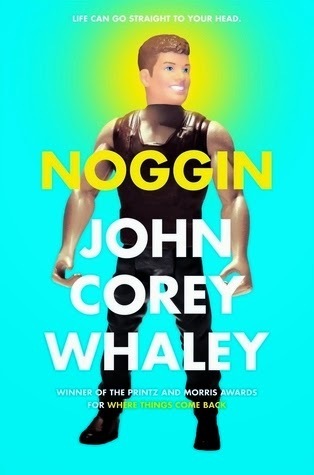 Noggin
by John Corey Whaley
Noggin
by John Corey WhaleyWhaley’s follow-up to his Printz-winning Where Things Come Back is a character-driven novel with an SF twist. Travis’ cancer was going to kill him, so he opted to have his head chopped off and put in cold storage, hoping one day science would advance far enough and he’d be revived using a donor body. He figures he’ll wake up in hundred years or so. Except that’s not what happens. It only takes five years. For newly-awakened Travis, it seems like no time has passed at all. But for everyone else, the world has changed. His friends (including his girlfriend) are now adults. His death profoundly affected his parents, and the fact that he’s alive again doesn’t magically fix everything. Not to mention the fact that he’s walking around in (on?) someone else’s body.
Whaley’s writing is very, very good, matched by Kirby Heyborne’s equally good narration. I wouldn’t have enjoyed this nearly as much if Heyborne weren’t narrating. Travis’ growth, the way he comes to terms (or not) with the way his life has changed, the way his family and friends come to terms with it – it’s masterfully done and quite compelling. Travis’ voice is clear; he’s not always likeable, not even at the end, but he’s believable. I can see why it was shortlisted for a National Book Award, and I can easily see this appealing to readers who normally don’t enjoy science fiction. The focus is entirely on Travis’ adjustment, and the medical/scientific procedure that allowed him to wake up five years after his “death” is not explained. That’s not what Whaley considers important in this story. I’ve seen some reviewers describe the premise as absurd or weird, but as far as SF novels go, it’s pretty tame.
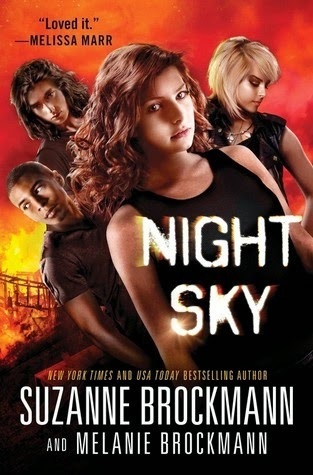 Night Sky
by Suzanne & Melanie Brockmann
Night Sky
by Suzanne & Melanie Brockmann Sasha, the little girl that Skylar babysits, has gone missing, and her father – who has also disappeared – is the prime suspect. The police already think Sasha is dead, but Skylar refuses to believe it. Then a girl named Dana comes into town, and Dana exhibits some of the abilities that Skylar believes she may have – like telekinesis. She learns that she’s a “greater-than,” which basically means she has superpowers. A lot of them. She and Dana, along with wheelchair-bound best friend Calvin and Dana’s sidekick Milo, decide to figure out what happened to Sasha on their own – and they discover it has everything to do with the greater-thans.
I’ve never read an adult Brockmann book and I can’t say this would encourage me to pick one up. The premise certainly has appeal for a certain kind of reader – those who can’t get enough books about teens with superpowers, for instance. It’s fairly diverse, too, though only in its ancillary characters. It’s action-heavy with a good vs. evil plot. But it goes on a little too long and the writing is weak. There’s a certain sentence structure that’s overused, so glaring that each time it happened I winced. (“He did this as I did that” or “I did this as she did that” with a long, drawn out second half. I could hear the narrator run out of air trying to get the whole sentence in without pausing for a breath. Just make it two sentences!) The narration isn’t great. Melanie Brockmann does it herself and she doesn’t voice any of the characters. Her voice is reedy and it sounds like she’s not getting enough air, even when the sentences are short. There are better offerings. (Kirkus gave it a starred review. But what do they know?)
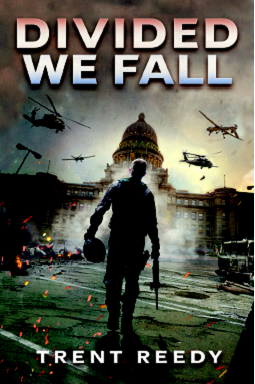 Divided We Fall
by Trent Reedy
Divided We Fall
by Trent Reedy This is one of those books that may be good in print, but is absolutely fantastic on audio. It’s about a high school kid, Danny, who joins the Idaho National Guard at age 17. He’s sent to help police a protest in Boise. Things get out of control. Someone bumps into his gun and it goes off. Then more people start shooting. Twelve people are killed. Not even Danny knows exactly what happened, but he becomes the face of the state of Idaho’s resistance to the federal government, which started as a refusal to implement a controversial federal ID law. The president wants Danny and the rest of the soldiers arrested, and the governor refuses. Events escalate. Each chapter ends with snippets from television news programs, tweets, radio callers, and the like, and these are all fully voiced by a diverse group of narrators. Some strongly recall Fox News or Rush Limbaugh (the latter of which is particularly painful to listen to), while others are more middle of the road, or simply reactionary. You’ve heard this stuff before, about similar things, things that are happening in real life right now. It’s at times more interesting than the main narrative itself.
Reedy does a good job of balancing each “side” of the story – those who support the state government and those who support the federal government. It’s a really tough tightrope to walk, but he succeeds in not making his book seem like it has an agenda. That’s partly due to Reedy’s protagonist, who is an everyguy – but of the kind we don’t see a lot in YA fiction: he lives in a semi-rural area, participates in rodeos, plays football, doesn’t intend to go to college, enjoys guns and country music. He joined the National Guard because he loved his state and he loved his country. These are all things we tend to associate with conservative kids, but his political views aren’t what’s on display. He never wanted to get caught up in everything that happens and would rather it all go away. This is a tricky, very discussable book that will probably piss some people off. The setting could have been Texas (my home state) and been just as believable. It’s very close to home; that’s what makes it worth the read.







 Related StoriesA Few Cybils Reads - Part IVAudio Review: Cleopatra's Moon by Vicky Alvear ShecterA Few Cybils Reads - Part VI
Related StoriesA Few Cybils Reads - Part IVAudio Review: Cleopatra's Moon by Vicky Alvear ShecterA Few Cybils Reads - Part VI
Published on November 24, 2014 22:00
November 23, 2014
INSPIRE: Toronto International Book Festival, Part 2 - The Event
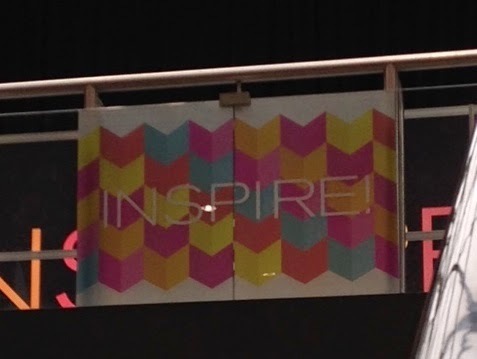
Onto the second part of this multi-part series of posts about the INSPIRE: Toronto International book Festival, I'm going to talk about the event itself. Later this week I'll wrap up with writing about the outside activities and sites I visited, then end with a post on what worked and what could be improved to make this a really knock out event.
The INSPIRE: Toronto International Book Festival (TIBF) ran for three days, from Friday, November 14 through Sunday, November 16. It kicked off on Thursday night, though, with a launch party. Prior to the launch, bloggers who were invited to meet with a handful of the event creators and facilitators, which gave us insight into how TIBF came to be what it is and what the vision for the event is. Unlike BEA, TIBF is meant to be a consumer-facing festival, meaning that the goal isn't to bring in the industry but instead, to draw in the general public. In other words, it wants to be more like what Book Con would hope to be, and the purpose isn't to talk up or get buzz going for upcoming titles. It's on selling readers what's already out there and encouraging reading in whatever form it takes.
Other countries throughout the world hold large consumer book festivals, but something similar in scope doesn't exist in North America, aside from the Gudalajara Festival. TIBF wants to fill in that gap, and the hope is that by being located in Toronto -- which is quickly accessible to a large population -- it can do just that.
I'd say for the inaugural year, it didn't do a bad job.
The Metro Centre, where the event was held, was so much more pleasant than the Javitz, and I think a large reason for that was it was much smaller and because this event wasn't as huge as BEA, there was more room for spreading out and making it an experience for attendees. When you went upstairs, where the exhibition and event floor was, attendees were greeted with a really neat display of old printing presses:
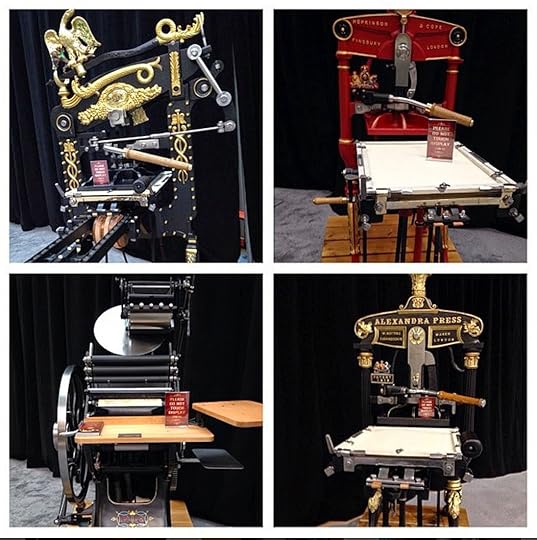
All of the programming stages, save for one of the multicultural ones, were on the same floor, meaning it was easy to go from program to program and dip into the different discussions without feeling like you were being a distraction. More, it never got too loud: the sound from the main stage didn't bleed into the smaller stages. There was enough space between the vendor booths and the stages, too, that it wasn't hard to hear in booth nor on stage.
Some of the exhibitors took the time to create really great booths, too. At BEA and at ALA, the booths are pretty standard: you get so much space, and you use it to pack in as much stuff as you can. But again, because this was a consumer event, the idea is less about the stuff and more about the experience. The best booth was, hands down, the Simon & Schuster Canada booth, which was set up like a cozy house, and each of the rooms had books that fit the theme. Cookbooks were in the kitchen, children's books were in the play room, and so forth:

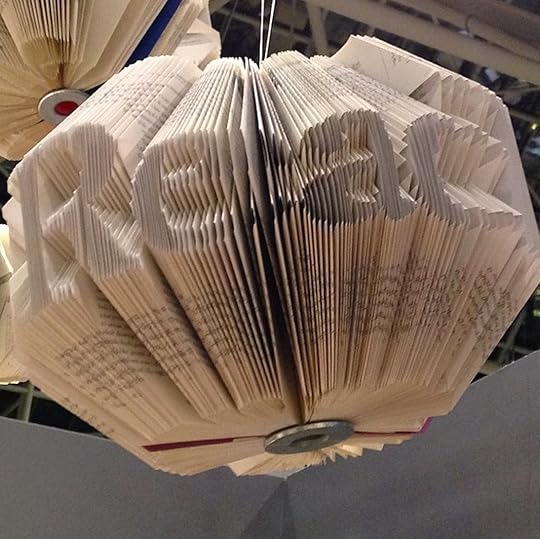
There were eight stages/feature areas, including an entire stage area dedicated for a First Nations, Metis, and Inuit Literary Circle. I didn't get a chance to attend any of the sessions there, but I dropped by to grab a picture of it, and I also stopped by the accompanying bookstore, where I spent the bulk of my book money. I'll talk a little bit more about this in a final post, including a link to the store for anyone interested in browsing or buying books that could be extremely difficult to find otherwise.
What the event coordinators told us about this specific element of the TIBF was that rather than go out and curate their own program for the First Nations stage and run the risk of appropriating culture or making huge missteps, they contacted the connections they had with members of the groups and asked them to create their own lineup of programming. They were given money to bring in their speakers and given money for those same people to get an honorarium for taking part. Though this is something a general attendee wouldn't know, this spoke volumes to me. From the beginning, the event was meant to include a diverse array of voices, and they put their money where their mouth is.
If I have any regrets about what I didn't get to do at TIBF, it would be that I didn't get to spend time here. If I go back in the future, I'd want to spend a few sessions, if not an entire day, listening in to the programming here.
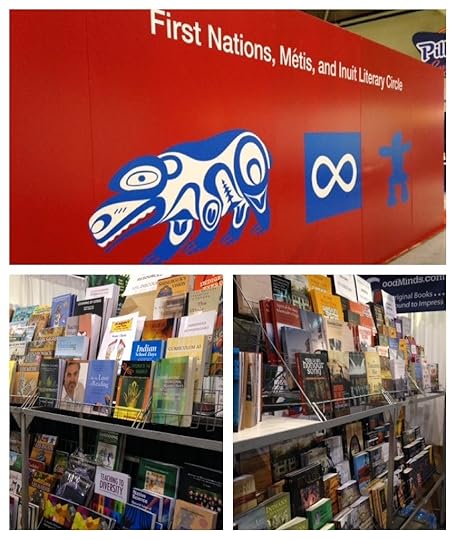
On Friday, after the bookstore tour, most of my energy was zapped, but I did manage to make it to a session that I'd been really looking forward to: "I Don't Give A Damsel: Writing Strong Young Women," featuring Meg Wolitzer, Gayle Forman, Sarah Mlynowski, and E. Lockhart. The session, as the title suggests, was meant to explore what a "strong female character" was and why and how these particular YA writers develop strong females in their work. It was hosted by Lainey Gossip, who kicked it off by asking each of the panelists what was meant by "strong female character." I snagged a short video of their responses (and yes, I was sitting near someone who was taking their sweet time opening a can of pop):
At times, especially during the Q&A, I felt like the panel went a little off the rails and became too self-conscious and directed at adult readers of YA, rather than YA readers (I even heard one of the panelists comment that a "real YA" was asking a question -- which was odd, since I thought most of the audience looked pretty young). It wasn't bad, but I ended up sneaking out before the end, since I thought the meat of the discussion happened early on, with questions like the one above.
I skipped out on the event Saturday -- the only regret I have about that is missing Margaret Atwood -- but on Sunday, I hit up a number of really interesting panels.
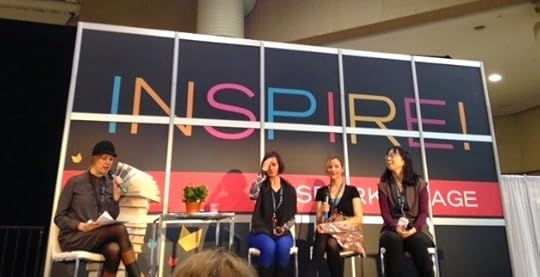
The first was called "Books By Their Covers: Redesigning Classics," featuring Elly MacKay (who redid the Anne of Green Gables and Emily of New Moon covers for Tundra), Debbie Ridpath Ohi (who redid the middle grade covers of the Judy Blume books), and Cybele Young (who redid the covers for the Kit Pearson books). This session was fantastic -- all three of the artists talked about "getting the call" and being asked to redesign covers for these hugely iconic books and what their design process was. How did they choose the images they did? What sort of mediums did they work with?
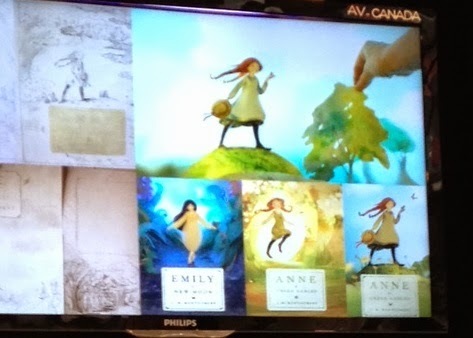
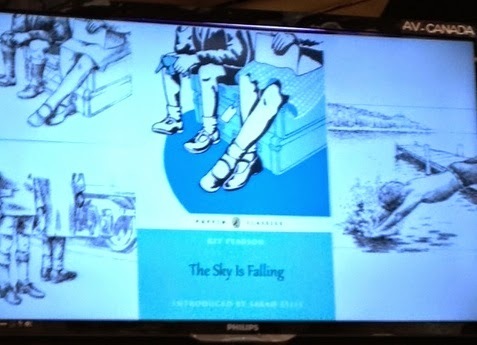
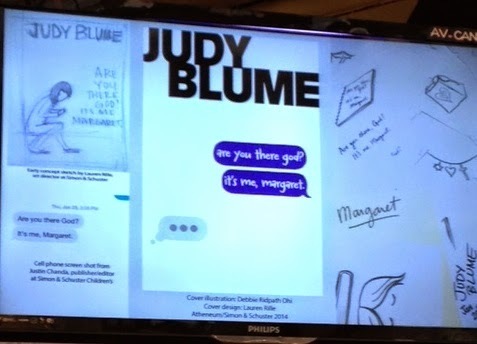
The most interesting take away from this was how Elly MacKay does her art. If you look at the top picture, you can see her hand placing the tree in the image. She illustrates and paints, then she cuts out her work and puts them inside a box, where she can rearrange them. When she's arranged them the way that she likes, she'll photograph it. You can get a closer look at all of the covers on her website. I'm regretting that I didn't pick up the Emily set now (though I did, thanks to the exceptionally attentive and helpful folks at the Penguin Random House Canada booth, pick up the first book in the Kit Pearson series, which features the design above).
The second panel I went to was "Comedy...? What's Funny in Funny Books?" and it featured Ryan North, Kate Beaton, and Chip Zdarsky. This panel was, as you'd expect, a complete riot. I know very little about humor or funny books, so I really enjoyed hearing about the process behind how funny writers come up with their jokes.
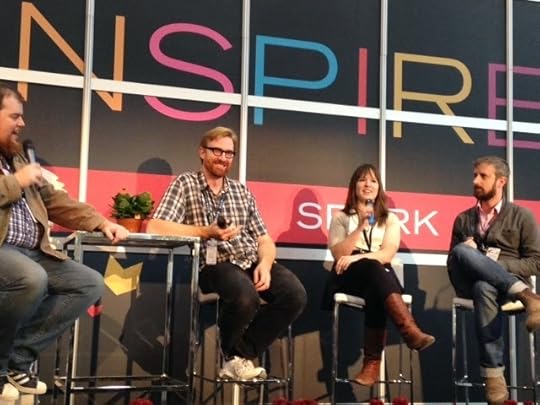
Aside from a stomach that hurt from laughing so much, the biggest takeaway from this panel was that even funny people know it can be weird and uncomfortable to try something new -- and sometimes something series -- and that the only way to grow is to go for it if you believe in it. The audience who doesn't like it will skip it and those who do will only encourage you to grow your art and style. There was great chemistry on the panel, and the way they were all able to play off one another made it even funnier.
The final panel I went to was at the end of the day on Sunday, and it was "Diversity, DJs, and DIY," featuring Greg Frankson A. K. A. Ritallin, Kayla Perrin, Stacey Marie Robinson, and Leonicka Valcius. Right before taking the stage, I got the chance to meet Leonicka, who I've been following on Twitter for a while and who has some incredibly insightful thoughts on diversity in publishing and the book world more broadly, and it was a treat to hear her talk about it on a big stage.
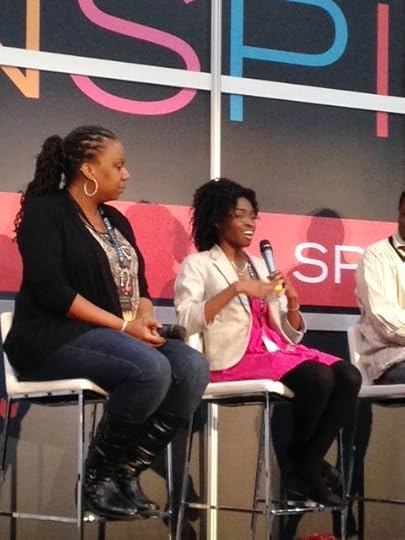
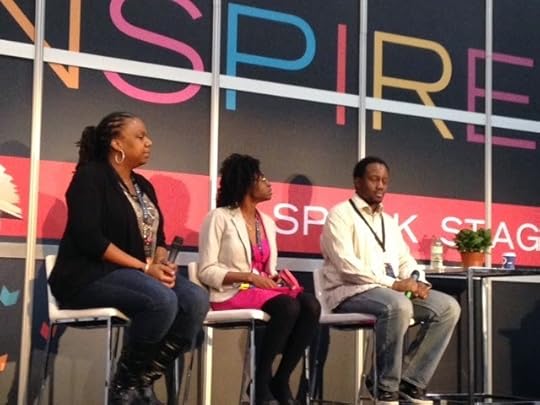
Something I found interesting -- and troubling -- was that there were so few white people sitting in the audience for this session. Maybe it was because the session was at a really bad time (it was one of the last of the entire event, on Sunday evening and came on the heels of Maggie Stiefvater talking on the main stage) but I suspect there's still some belief that a diversity panel isn't "for" white people. If anything, after this session, I feel completely opposite that. This was a session I needed to go to, even though I've heard some of this discussion before. Aside from insight into what publishing is or isn't doing to bolster the voices of marginalized writers, the biggest take away I got came from Robinson, who talked about why she chooses to self-publish her work and how she thinks that self-publishing is one of the most interesting avenues for marginalized voices and stories right now.
This is something I hadn't thought about before, and Robinson opened my mind to thinking about self-publishing in a bit of a different light. Like New Adult got its biggest audience via self-publishing, I suspect this is and will continue to be the case for diverse writers. More, it's not about going this route because it's the only option; rather, it's going this route because it's a way to subvert the gates that are hard to break down and even harder when you're not white.
Leonicka talked about how publishing itself remains so white because it's difficult to break in when you don't have privilege to do so. In other words, going to college, getting an internship in the industry, then taking on a job that doesn't pay enough to cover the bills -- those are things people from marginalized backgrounds can't often do in the same way that white people can. It was impossible not to look at those two discussions in tandem.
Another really interesting takeaway for me was how the Canadian landscape is different than the American one when it comes to reading and publishing. Perrin, who writes for Harlequin, talked about how in her first books, she was asked to change the setting of her stories, since American readers would be more reluctant to pick up a story set in Toronto than they would be a story set in Chicago. There was a good conversation about how black voices are represented and understood when they're from Canada, as well -- Perrin noted that her readers are sometimes surprised she's Canadian.
I wish more people were in the audience to hear this panel. Perhaps in the future, a similar panel could be put on at a better time or, even more radically, maybe it could be a main stage event or not be competing with a large main stage event.
TIBF had so many other sessions I wanted to go to and didn't get the chance to, either because they were scheduled against panels I wanted to see or because I was so drained from other events, I couldn't get myself there. This is the kind of event, though, I would be interested in attending again -- when the schedule goes up for next year, I'll definitely be looking to see if it's worth the trip. Toronto is closer, cleaner, safer, and so much more appealing to me as a visitor than New York City. While mid-November is kind of a crummy time to travel north, it didn't bother me much: there aren't huge tourist crowds, hotels and airfare tend to be cheaper (I stayed in the nice hotel for an extra night on my own, and it was under $100 with taxes which I consider more than a fair price), and this was a nice time to get away before the holidays consume everything. While I didn't have to pay for my pass to attend the event as a member of the press, the cost of $25 for the opening night party and three days of events is extremely reasonable.
While the event's attendance seemed like it waxed and waned -- on Friday, for the Kid's Day, there seemed to be far bigger crowds than on Sunday, though the event competed with the city's Santa Claus parade that day -- it never felt packed and unbearable. I could wander the booths and could always find a chair for the sessions. One of the things I mentioned to a couple others was that the set up lent itself to browsing, mingling, and sitting. The last one seems like it's not important, but it is: there were seats and chairs and lounging areas throughout the convention center, which made it nice to collect yourself, your stuff, and to just browse through the books you bought.
One of the very last things I noticed at the fair, and something I thought was just a nice touch, was that there was an entire gallery of children's books illustrations to browse. The event celebrated the entire landscape of the book world in a really accessible and fun way. Also, thumbs up to the publishers who took the little extra steps to make finding books about certain topics easy to find, both through labels (like below) and through being eager to talk about them.
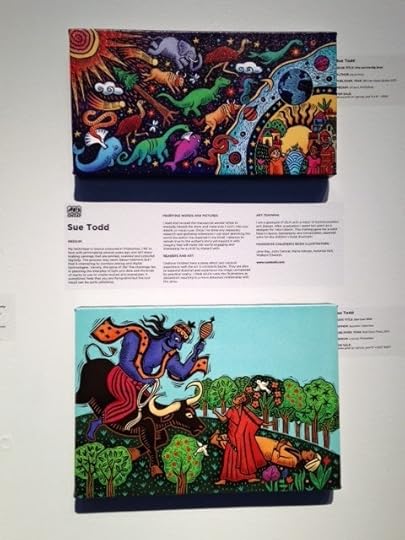
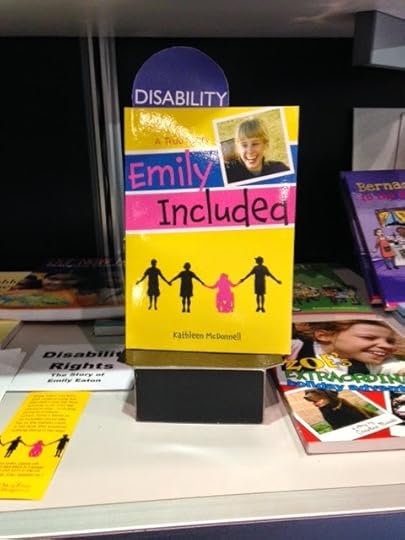







 Related StoriesINSPIRE: Toronto International Book Festival, Part 1 - The Quick HighlightsToronto Bound: See You At INSPIRE!Fabulously Diverse YA Book Covers We Should See More Often
Related StoriesINSPIRE: Toronto International Book Festival, Part 1 - The Quick HighlightsToronto Bound: See You At INSPIRE!Fabulously Diverse YA Book Covers We Should See More Often
Published on November 23, 2014 22:00
This Week in Reading: Volume X
This is a big old round-up of the last two weeks in books I've bought, borrowed, or received in the mail. I'm breaking it up into a few different pictures for organizational reasons and because I want to talk a bit about the books I got at Toronto International Book Festival at the First Nations bookstore in a little more depth than usual.
First up, the library books:
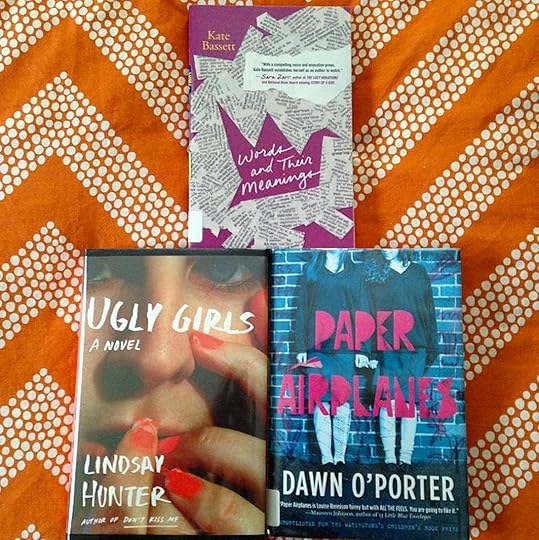
Words and Their Meanings by Kate Bassett: A contemporary YA about teen girl writer working through grief and it's got a Sara Zarr blurb. I think that checks more than one of my boxes.
Ugly Girls by Lindsay Hunter: An adult novel about a teen girl friendship. That cover is awesome, and the reviews suggest this is an intense book.
Paper Airplanes by Dawn O'Porter: I read this one this week and was really let down. It did some of what Fiona Wood's Wildlife did in terms of being open about sexuality and toxic friendships between teen girls, but the budding relationship between the two girls here felt rushed and underdeveloped. I got bored about 3/4 of the way through.
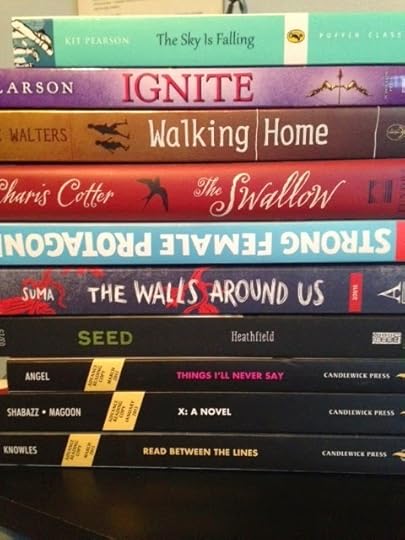
The Sky is Falling by Kit Pearson -- I picked this up at the book festival and it's a Canadian children's classic.
Ignite by Sara Larson (January 6) -- I'll probably pass this on to Kimberly.
Walking Home by Eric Walters -- Another title I picked up at the book festival. The Kenyan setting was what caught my eye.
The Swallow by Charis Cotter -- This is a middle grade ghost story that came highly recommended by a couple of people at the book festival, so I bought it.
Strong Female Protagonist by Brennan Lee Mulligan and Molly Ostertag -- I'm here for this graphic novel!
The Walls Around Us by Nova Ren Suma (March 24) -- I read this one, and then I got into a conversation with a fellow Book Rioter about it, and I realized how much I need to read this a second or third time before I can write about it here. I found a REALLY interesting detail that made me requestion something I'd read, and I know this is Suma's trademark, so I'm excited to follow this path again.
Seed by Lisa Heathfield (March 10) -- Cults! Enclosed communities! This sounds a little bit like Gated by Amy Christine Parker.
Things I'll Never Say edited by Ann Angel (March 24) -- There's gotta be a trend on short true stories by YA authors now, between this and Love & Profanity .
X: A Novel by Ilyasah Shabazz and Kekla Magoon (January 6) -- A novelization about Malcoln X, co-written by his daughter.
Read Between The Lines by Jo Knowles (March 10) -- This one wins for one of the best YA covers I've seen.
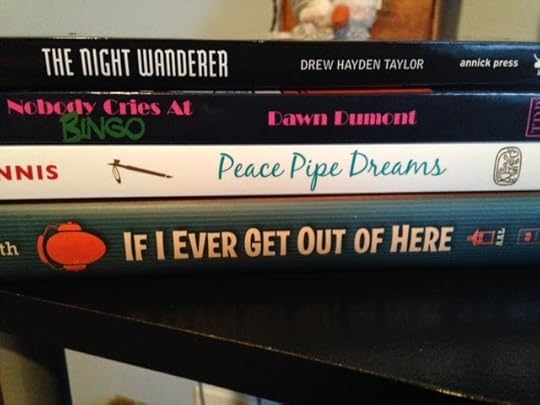
These are the books I picked up at INSPIRE: Toronto International Book Festival at the First Nations book store. Aside from the bottom title, all of these are tough to track down in the US, and I know that there are others who might be interested in checking the store out and discovering First Nations titles from Canada.
The store has a website, GoodMinds, and they do ship worldwide. It is a Native owned business, as well. I popped into their store before the show officially opened on Sunday, so I didn't get a chance to ask for book recommendations, but Ana and Thea of the Book Smugglers said that the staff was exceptionally knowledgable and helpful in recommending titles to them, based on their interests and tastes. I suspect the same would be said through contacting them on their site.
A couple of these books I would never have picked up based on the covers, but because I was in Canada for a show, I wanted to put that aside and pick up the books that sounded great. This is what I decided on:
The Night Wanderer by Drew Hayden Taylor -- A Native gothic novel? Yes, please.
Nobody Cries at Bingo by Dawn Dumont -- A coming-of-age story. The cover was tough to pick up, but I read the description and kept coming back to pick the book up. I figured if I didn't buy it, I'd be mad later.
Peace Pipe Dreams: The Truth and Lies About Indians by Darrell Dennis -- I wanted an easy-to-grasp non-fiction title and this fit the bill.
If I Ever Get Out Of Here by Eric Gansworth -- I've been meaning to read this one, and I saw a copy, so I bought it.
Aside from Paper Airplanes, I also read an early copy of I Am Not A Slut by Leora Tanenbaum, a non-fiction exploration of slut bashing and slut shaming. I didn't agree with the entire book -- at times her exploration of what slut shaming is and isn't actually is slut shaming in and of itself (which was weird) -- but in general, a solid read for anyone who works with teen girls and is interested in the problematic term "slut" and why it can't and shouldn't be reclaimed at this point.
Around the Web:
Summer wrote this fantastic post called "I am not oppressed" about YA books, covers featuring girls wearing hijabs, and what the implications of those things may be. This is powerful and important and eye opening. Enough other people have written and talked about Daniel Handler's racist comment at the National Book Awards, but this post at the Lee and Low blog about what those comments said about publishing more broadly is really worth a read. Four mistakes made in children's literature about Natives and books that fix them. Leila wrote an incredible review of Gabi, A Girl in Pieces by Isabel Quintero I am linking to because I really want more people to read and love this book as much as I do and as much as she does. Then go read Isabel's post over at Diversity in YA about making herself visible. 23 things I'd rather read than another think piece about what's "wrong" with children's literature made me laugh so hard. I got an even bigger kick out of the male who reblogged this from the Book Riot tumblr and asked what toxic shock syndrome was. Over in the UK, Ladybird is dropping the "for boys" and "for girls" labels from their books. On the heels of that post, there's this one at Paste Magazine about excellent graphic novels for adolescent girls. Ignore the "for girls" label there: this is really a list of female-led comics. A peek at the next projects on deck for comic artist Sara Varon. Kimberly and I are both fans of Varon, and I love this look at what's next. Angie wrote a really great post about how librarians and library users can do real work in bettering diversity within the library. Looking for current read alikes to Pretty Little Liars? Molly put together a great reader's advisory guide. And over at Leila's blog, 7 YA books about graffiti artists.
I'm putting the final touches onto Contemporary YA week here at Stacked, which will run December 1-5. I am thrilled with the guest posts I've gotten so far, and I'm so eager to share them and the ones that are rolling in soon. These are all fresh topics, fresh takes on topics, and should spur some great discussion.






 Related StoriesThis Week in Reading: Volume IXThis Week in Reading: Volume VIIIThis Week in Reading: Volume VII
Related StoriesThis Week in Reading: Volume IXThis Week in Reading: Volume VIIIThis Week in Reading: Volume VII
First up, the library books:

Words and Their Meanings by Kate Bassett: A contemporary YA about teen girl writer working through grief and it's got a Sara Zarr blurb. I think that checks more than one of my boxes.
Ugly Girls by Lindsay Hunter: An adult novel about a teen girl friendship. That cover is awesome, and the reviews suggest this is an intense book.
Paper Airplanes by Dawn O'Porter: I read this one this week and was really let down. It did some of what Fiona Wood's Wildlife did in terms of being open about sexuality and toxic friendships between teen girls, but the budding relationship between the two girls here felt rushed and underdeveloped. I got bored about 3/4 of the way through.

The Sky is Falling by Kit Pearson -- I picked this up at the book festival and it's a Canadian children's classic.
Ignite by Sara Larson (January 6) -- I'll probably pass this on to Kimberly.
Walking Home by Eric Walters -- Another title I picked up at the book festival. The Kenyan setting was what caught my eye.
The Swallow by Charis Cotter -- This is a middle grade ghost story that came highly recommended by a couple of people at the book festival, so I bought it.
Strong Female Protagonist by Brennan Lee Mulligan and Molly Ostertag -- I'm here for this graphic novel!
The Walls Around Us by Nova Ren Suma (March 24) -- I read this one, and then I got into a conversation with a fellow Book Rioter about it, and I realized how much I need to read this a second or third time before I can write about it here. I found a REALLY interesting detail that made me requestion something I'd read, and I know this is Suma's trademark, so I'm excited to follow this path again.
Seed by Lisa Heathfield (March 10) -- Cults! Enclosed communities! This sounds a little bit like Gated by Amy Christine Parker.
Things I'll Never Say edited by Ann Angel (March 24) -- There's gotta be a trend on short true stories by YA authors now, between this and Love & Profanity .
X: A Novel by Ilyasah Shabazz and Kekla Magoon (January 6) -- A novelization about Malcoln X, co-written by his daughter.
Read Between The Lines by Jo Knowles (March 10) -- This one wins for one of the best YA covers I've seen.

These are the books I picked up at INSPIRE: Toronto International Book Festival at the First Nations book store. Aside from the bottom title, all of these are tough to track down in the US, and I know that there are others who might be interested in checking the store out and discovering First Nations titles from Canada.
The store has a website, GoodMinds, and they do ship worldwide. It is a Native owned business, as well. I popped into their store before the show officially opened on Sunday, so I didn't get a chance to ask for book recommendations, but Ana and Thea of the Book Smugglers said that the staff was exceptionally knowledgable and helpful in recommending titles to them, based on their interests and tastes. I suspect the same would be said through contacting them on their site.
A couple of these books I would never have picked up based on the covers, but because I was in Canada for a show, I wanted to put that aside and pick up the books that sounded great. This is what I decided on:
The Night Wanderer by Drew Hayden Taylor -- A Native gothic novel? Yes, please.
Nobody Cries at Bingo by Dawn Dumont -- A coming-of-age story. The cover was tough to pick up, but I read the description and kept coming back to pick the book up. I figured if I didn't buy it, I'd be mad later.
Peace Pipe Dreams: The Truth and Lies About Indians by Darrell Dennis -- I wanted an easy-to-grasp non-fiction title and this fit the bill.
If I Ever Get Out Of Here by Eric Gansworth -- I've been meaning to read this one, and I saw a copy, so I bought it.
Aside from Paper Airplanes, I also read an early copy of I Am Not A Slut by Leora Tanenbaum, a non-fiction exploration of slut bashing and slut shaming. I didn't agree with the entire book -- at times her exploration of what slut shaming is and isn't actually is slut shaming in and of itself (which was weird) -- but in general, a solid read for anyone who works with teen girls and is interested in the problematic term "slut" and why it can't and shouldn't be reclaimed at this point.
Around the Web:
Summer wrote this fantastic post called "I am not oppressed" about YA books, covers featuring girls wearing hijabs, and what the implications of those things may be. This is powerful and important and eye opening. Enough other people have written and talked about Daniel Handler's racist comment at the National Book Awards, but this post at the Lee and Low blog about what those comments said about publishing more broadly is really worth a read. Four mistakes made in children's literature about Natives and books that fix them. Leila wrote an incredible review of Gabi, A Girl in Pieces by Isabel Quintero I am linking to because I really want more people to read and love this book as much as I do and as much as she does. Then go read Isabel's post over at Diversity in YA about making herself visible. 23 things I'd rather read than another think piece about what's "wrong" with children's literature made me laugh so hard. I got an even bigger kick out of the male who reblogged this from the Book Riot tumblr and asked what toxic shock syndrome was. Over in the UK, Ladybird is dropping the "for boys" and "for girls" labels from their books. On the heels of that post, there's this one at Paste Magazine about excellent graphic novels for adolescent girls. Ignore the "for girls" label there: this is really a list of female-led comics. A peek at the next projects on deck for comic artist Sara Varon. Kimberly and I are both fans of Varon, and I love this look at what's next. Angie wrote a really great post about how librarians and library users can do real work in bettering diversity within the library. Looking for current read alikes to Pretty Little Liars? Molly put together a great reader's advisory guide. And over at Leila's blog, 7 YA books about graffiti artists.
I'm putting the final touches onto Contemporary YA week here at Stacked, which will run December 1-5. I am thrilled with the guest posts I've gotten so far, and I'm so eager to share them and the ones that are rolling in soon. These are all fresh topics, fresh takes on topics, and should spur some great discussion.







 Related StoriesThis Week in Reading: Volume IXThis Week in Reading: Volume VIIIThis Week in Reading: Volume VII
Related StoriesThis Week in Reading: Volume IXThis Week in Reading: Volume VIIIThis Week in Reading: Volume VII
Published on November 23, 2014 05:06
November 20, 2014
This Week at Book Riot
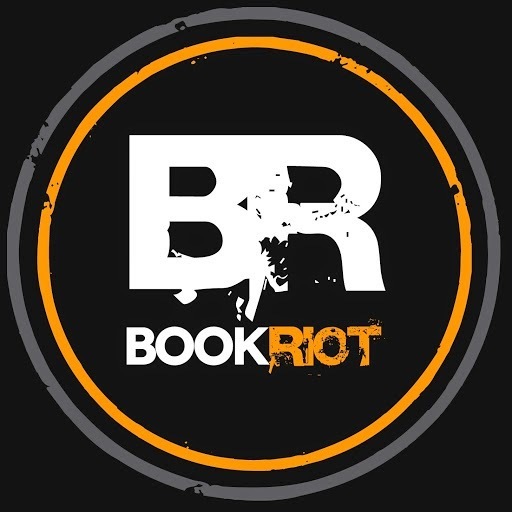
Over at Book Riot this week, just one post, since I'm writing a piece for this upcoming weekend and have been working on a huge post that's consuming my writing time with "research" time (but it's going to be a blast):
3 On A YA Theme: It's Basketball Season -- three YA novels that feature basketball as a big part of the story.







 Related StoriesThis Week at Book Riot
Related StoriesThis Week at Book Riot
Published on November 20, 2014 22:00



